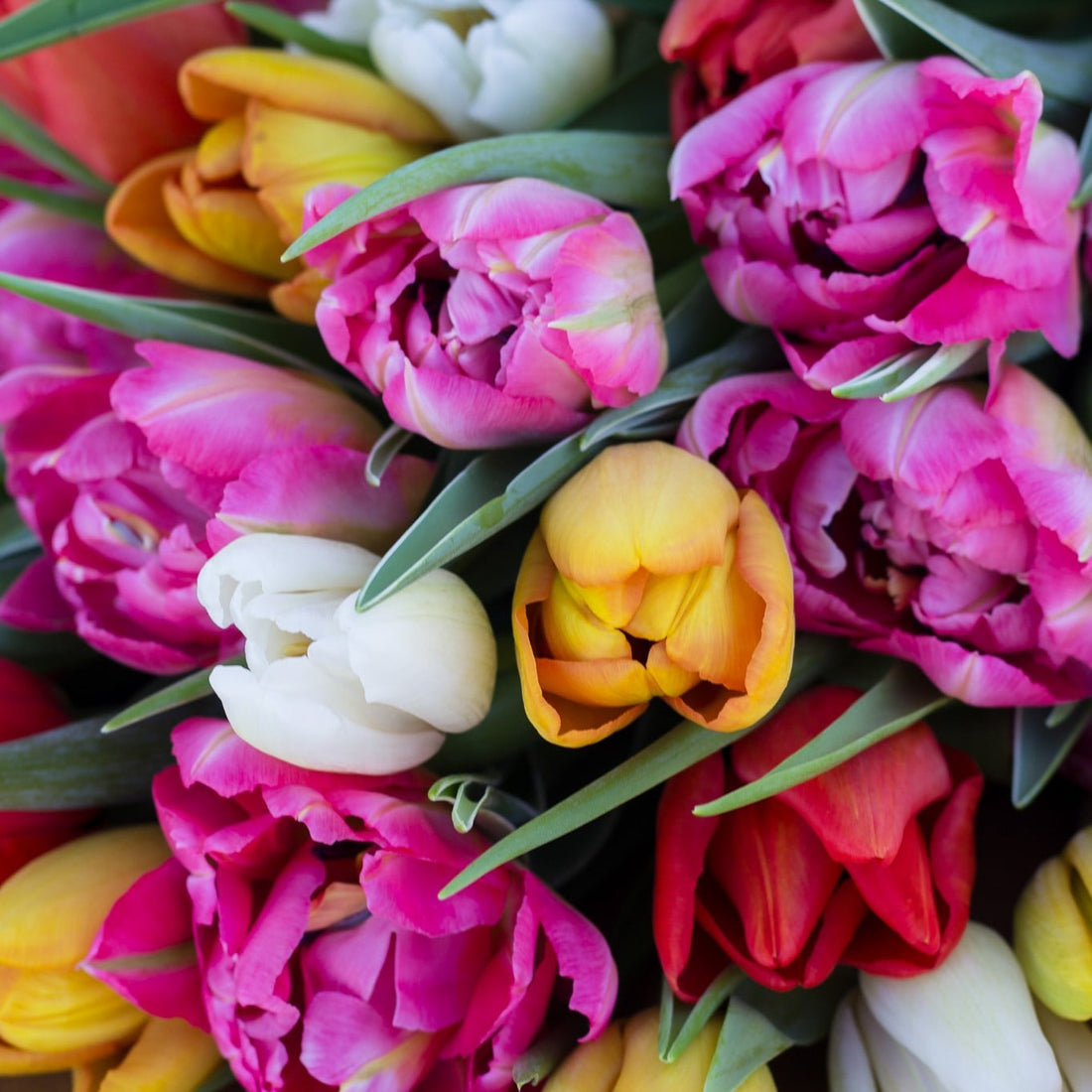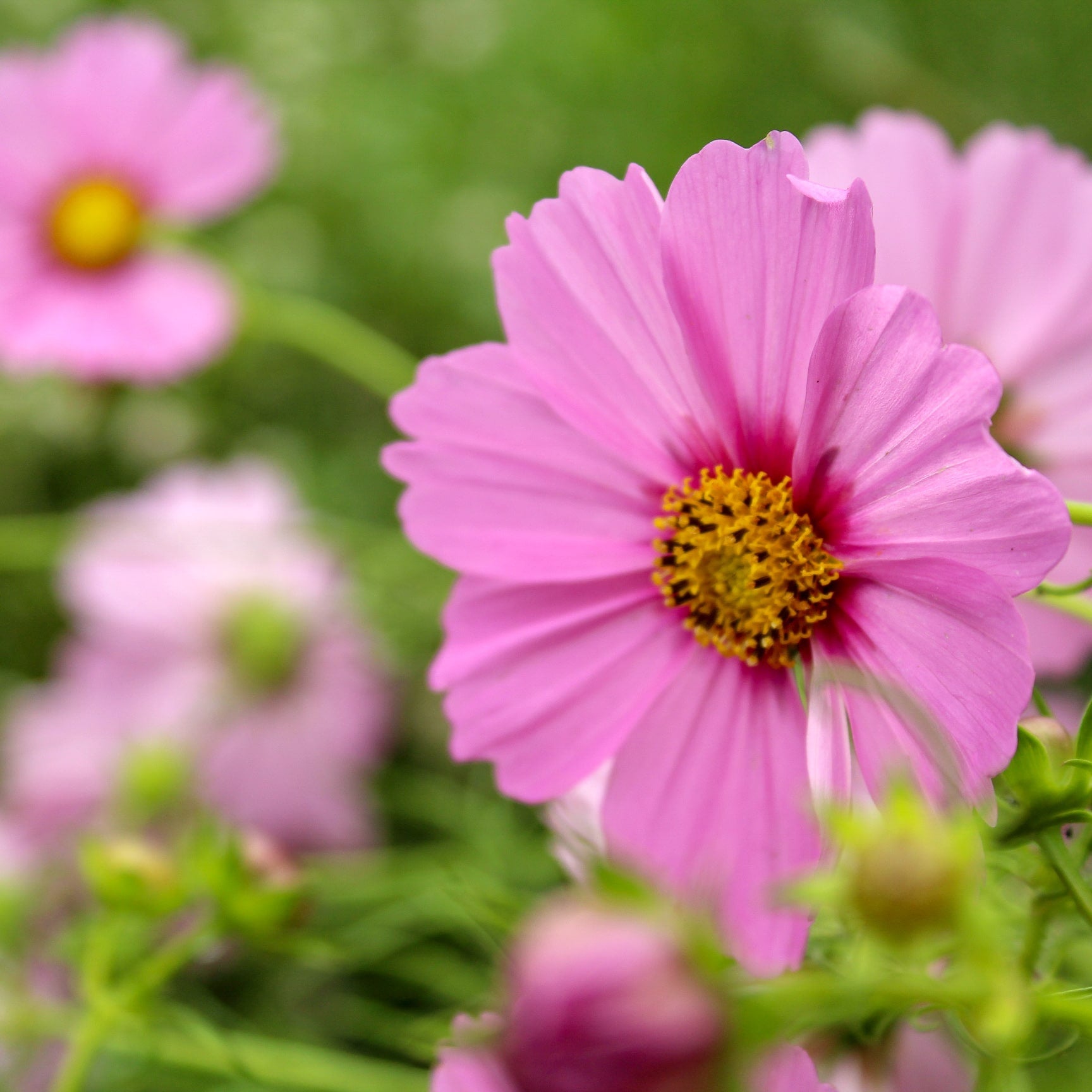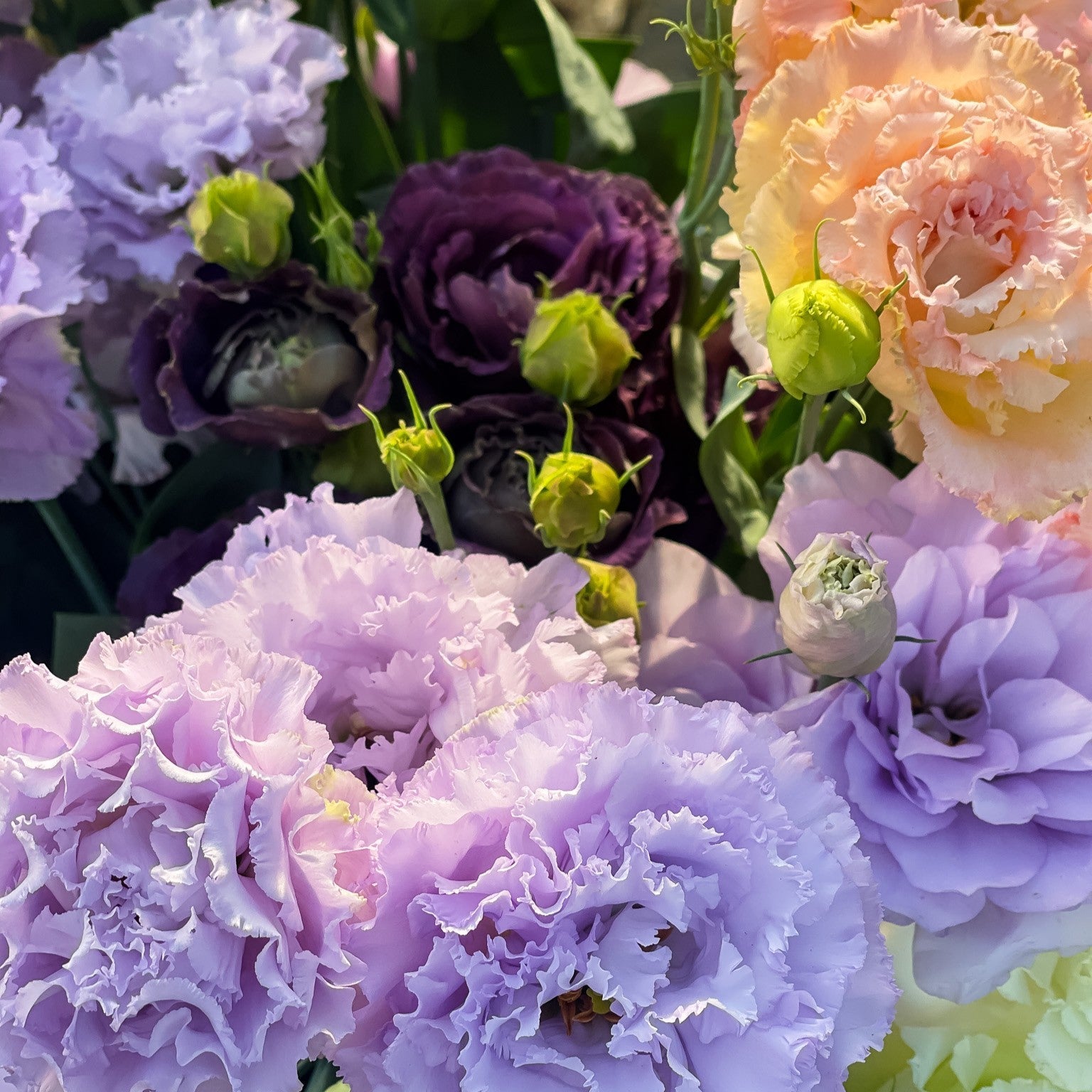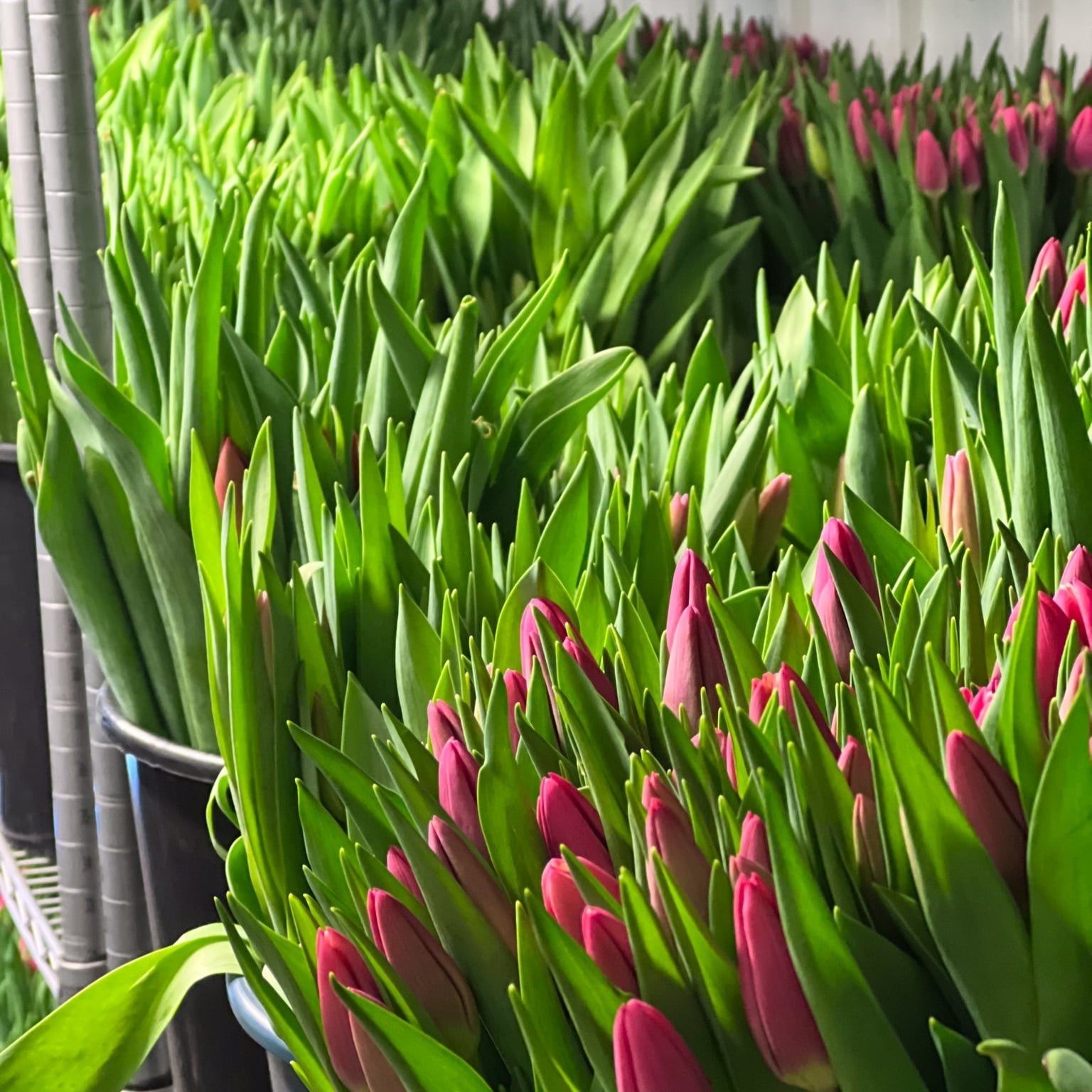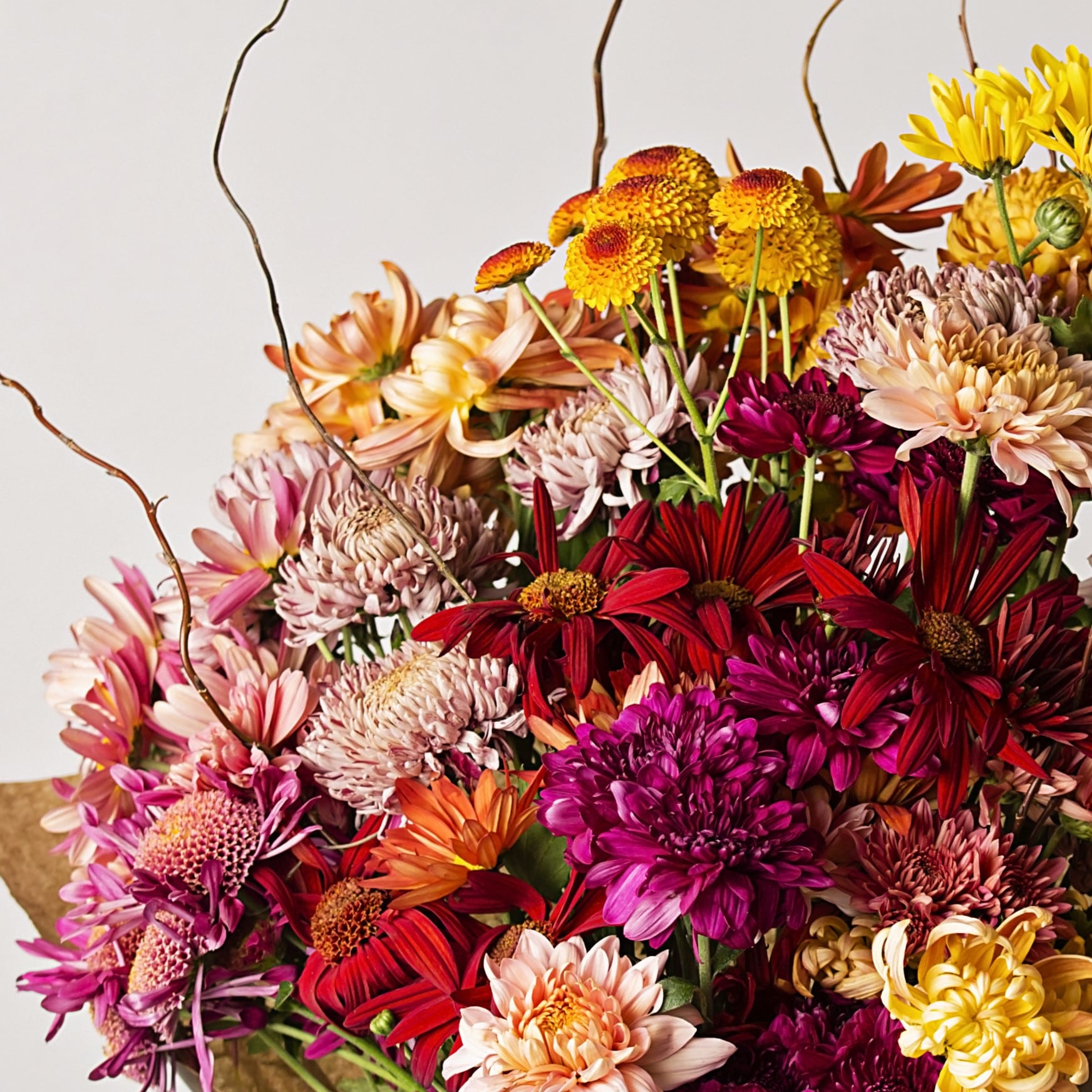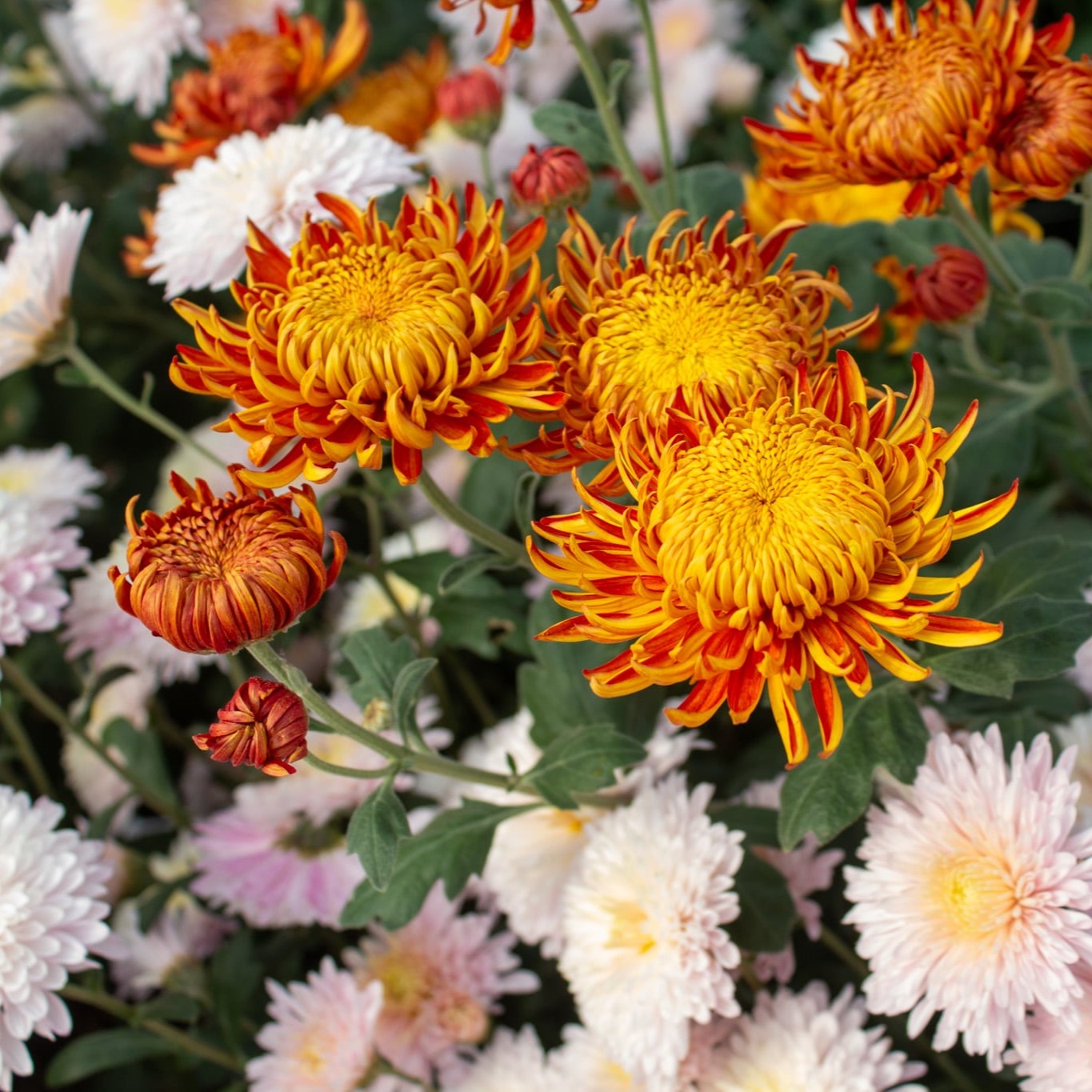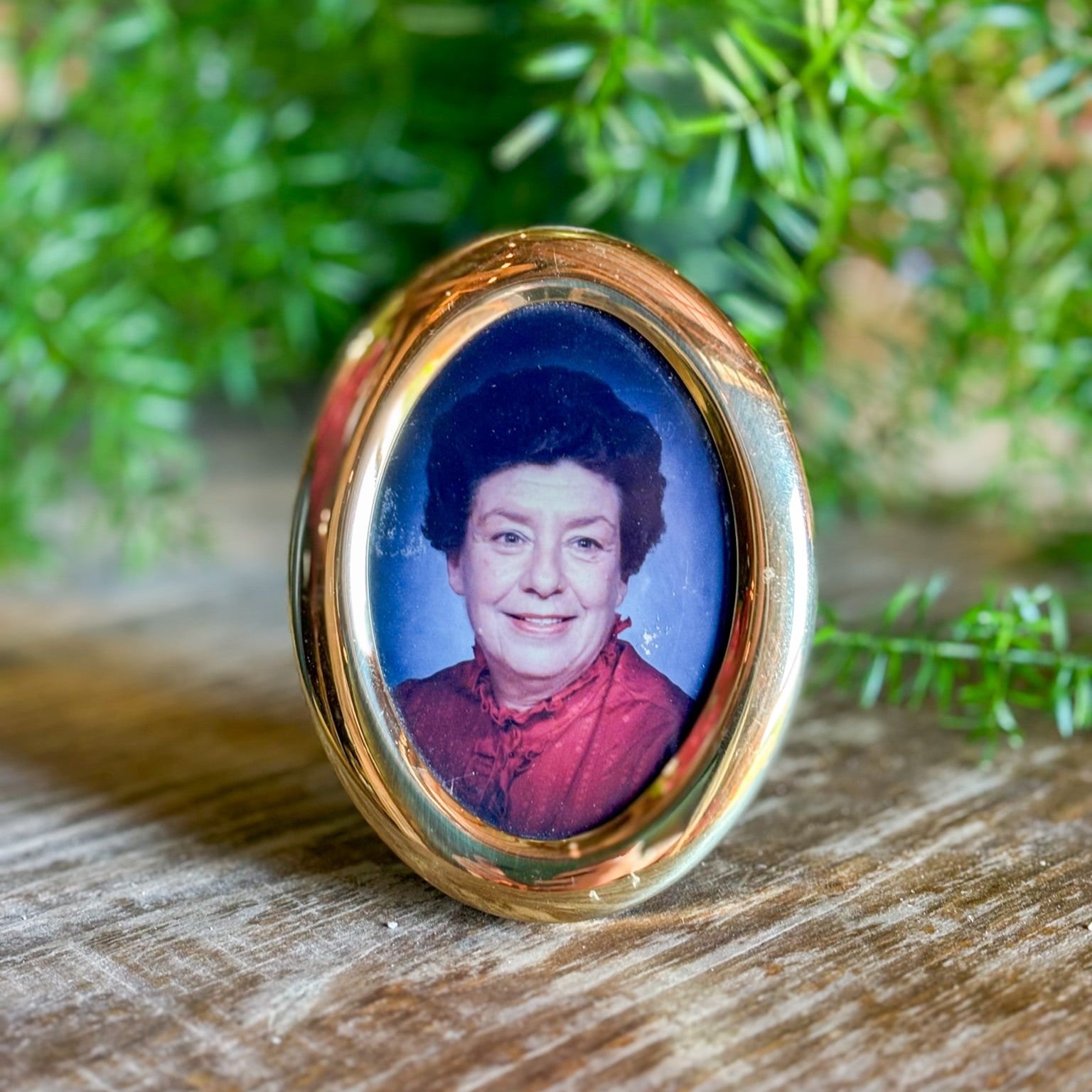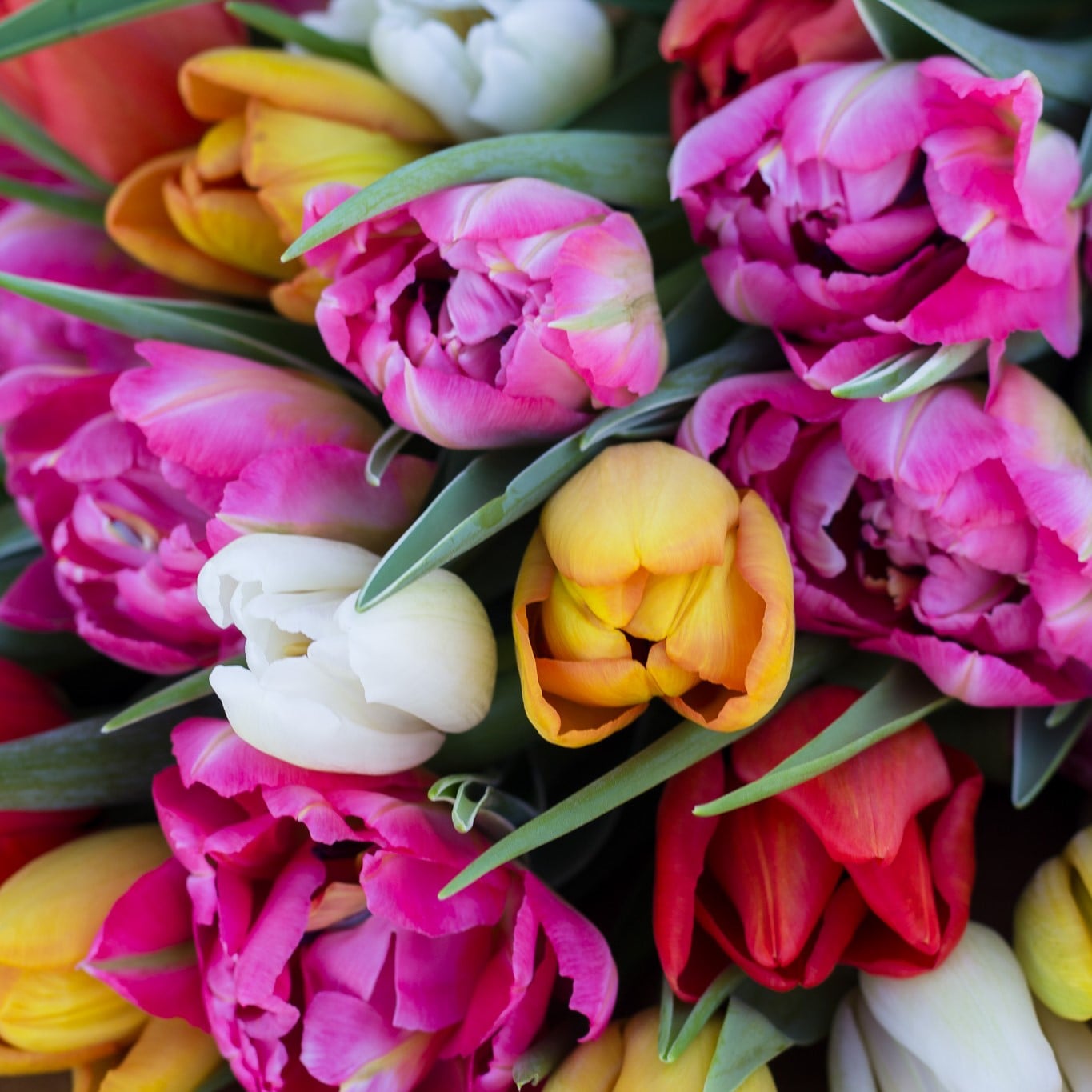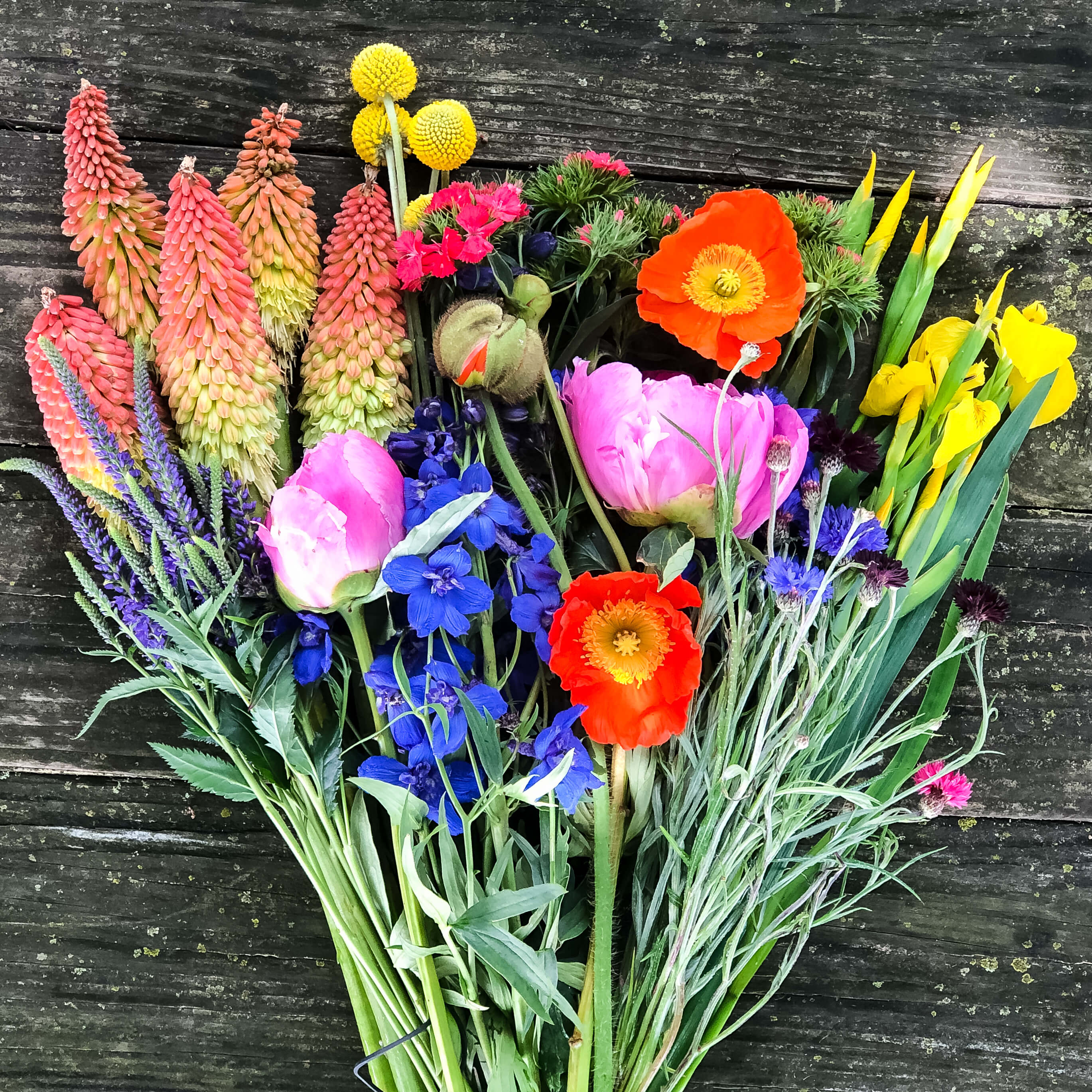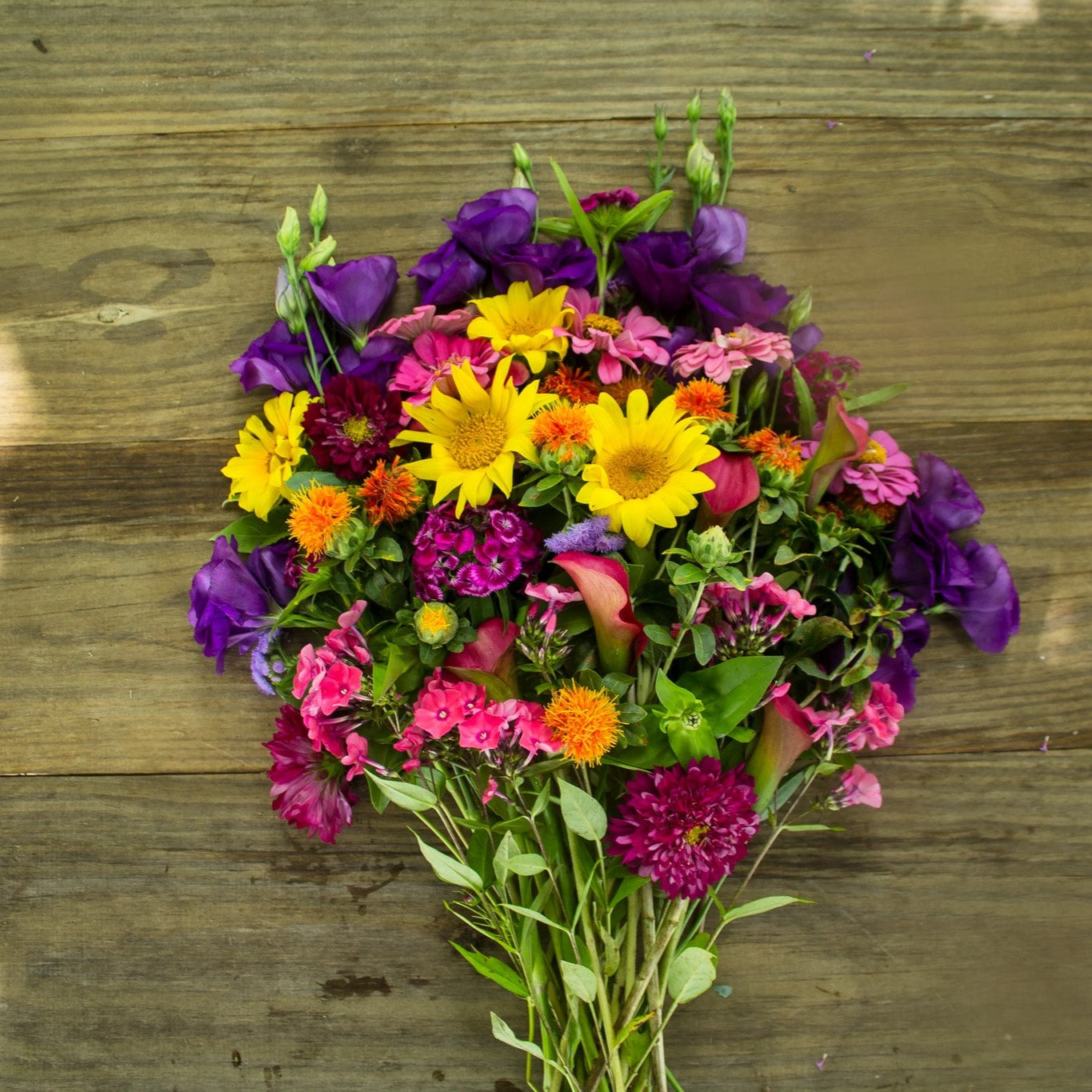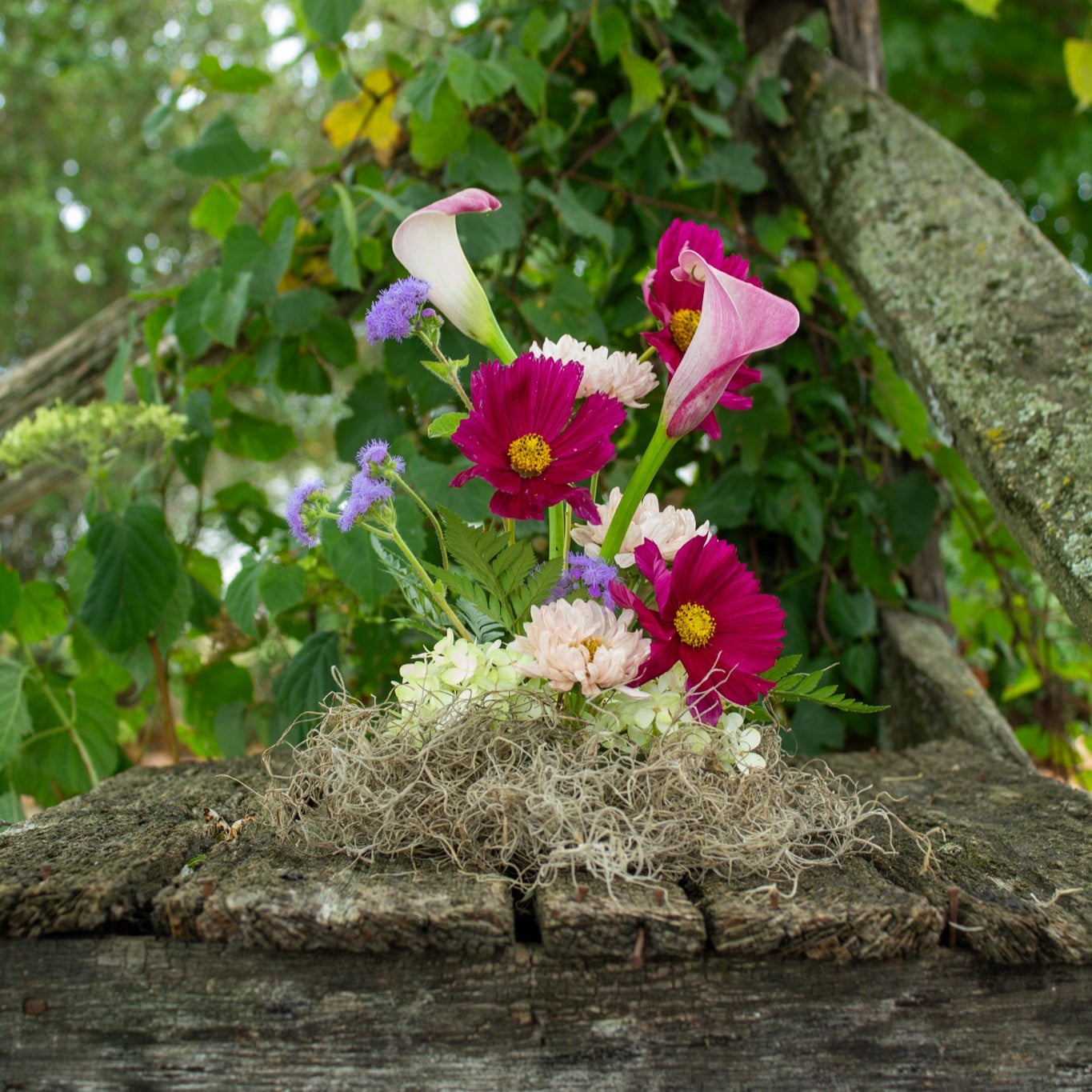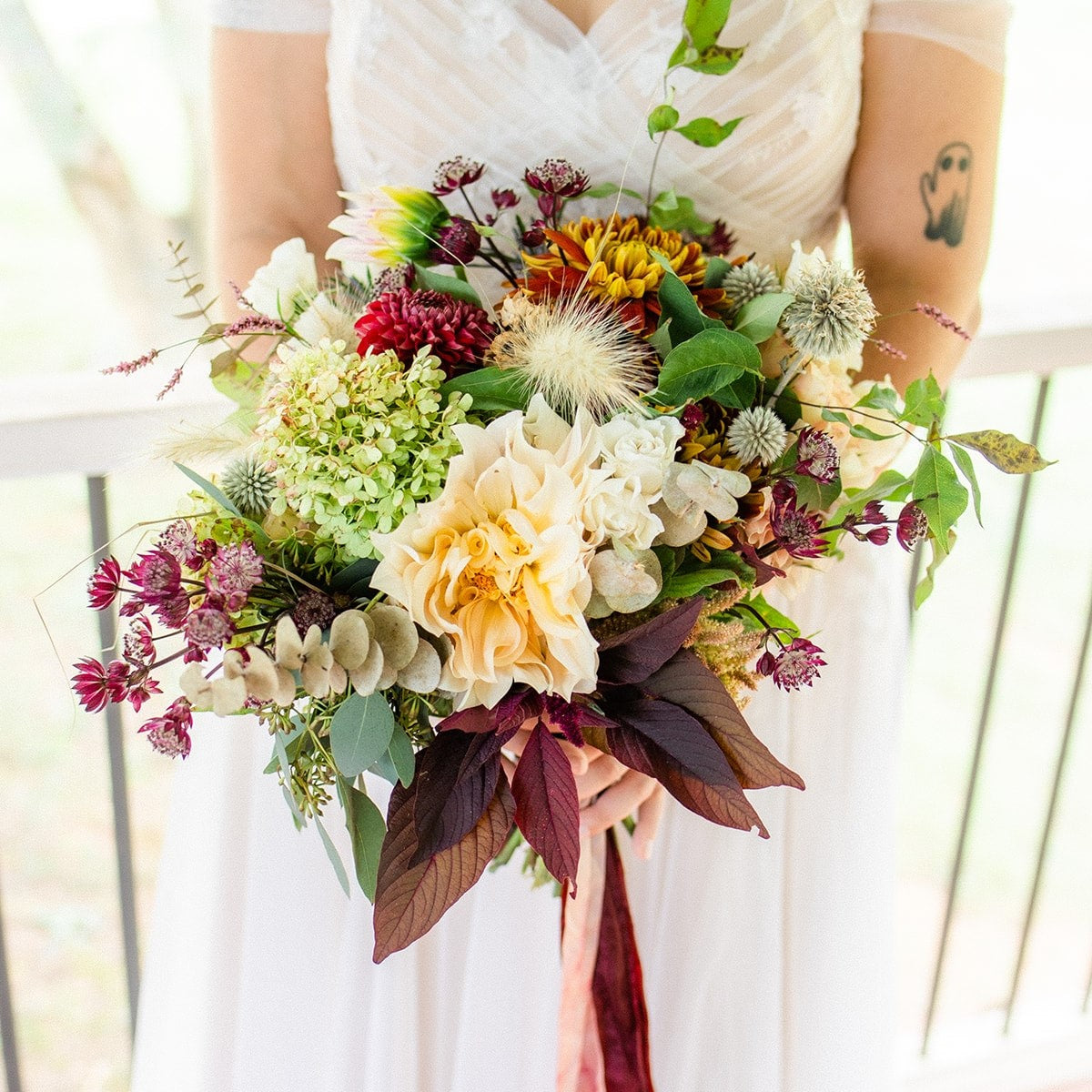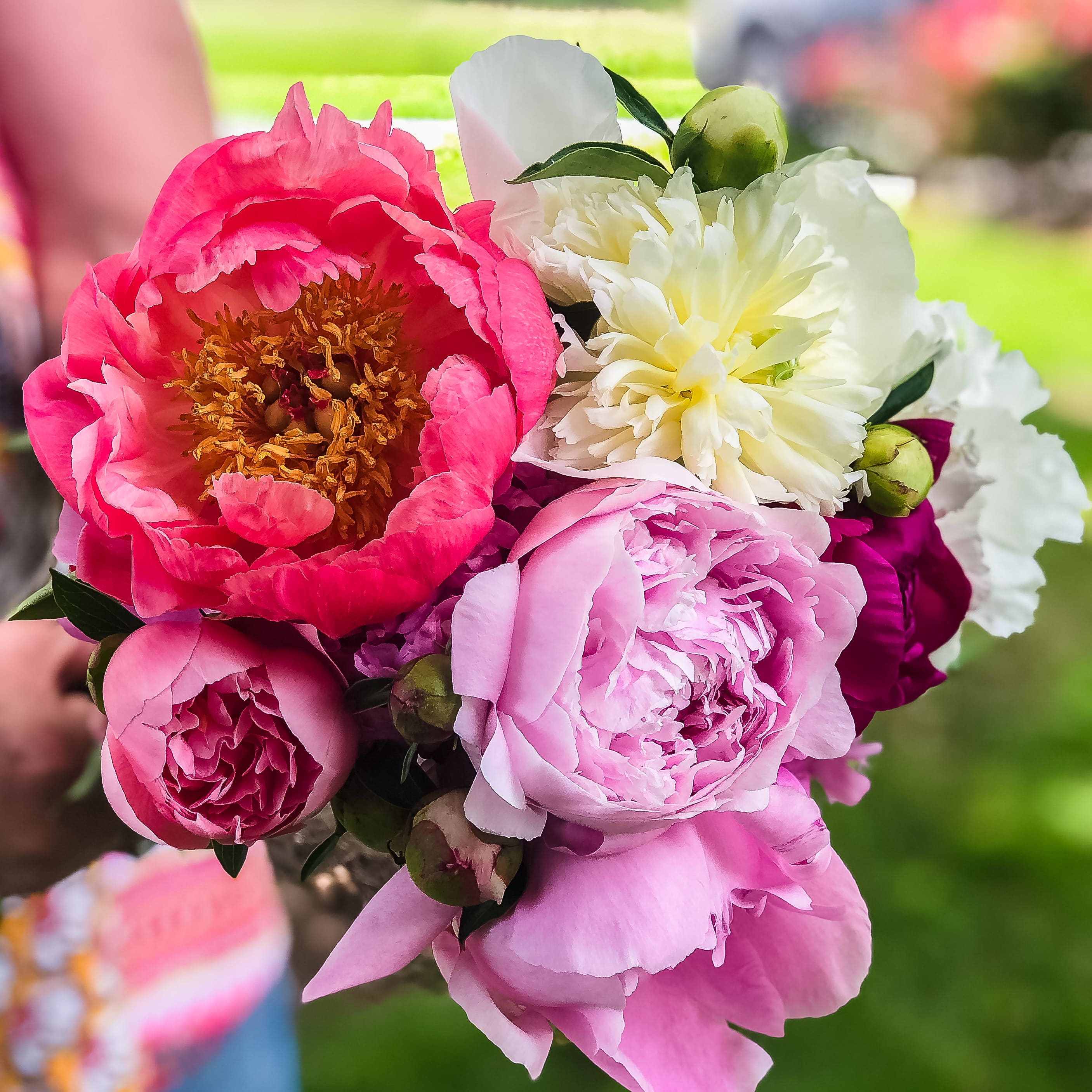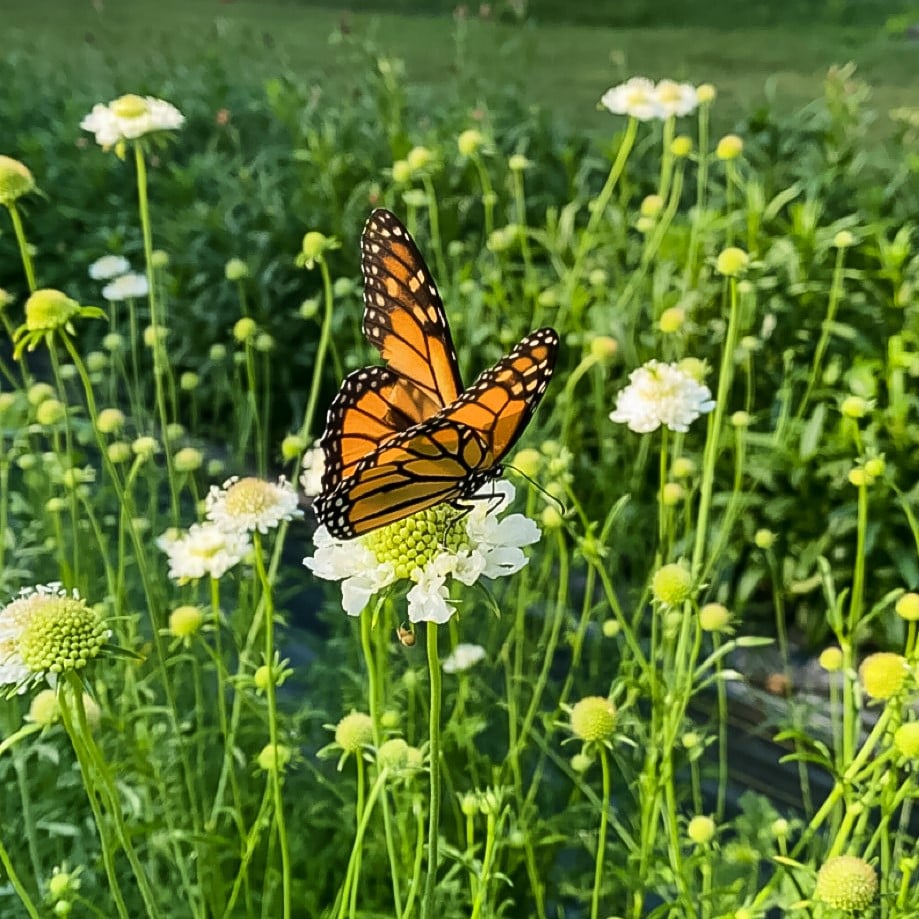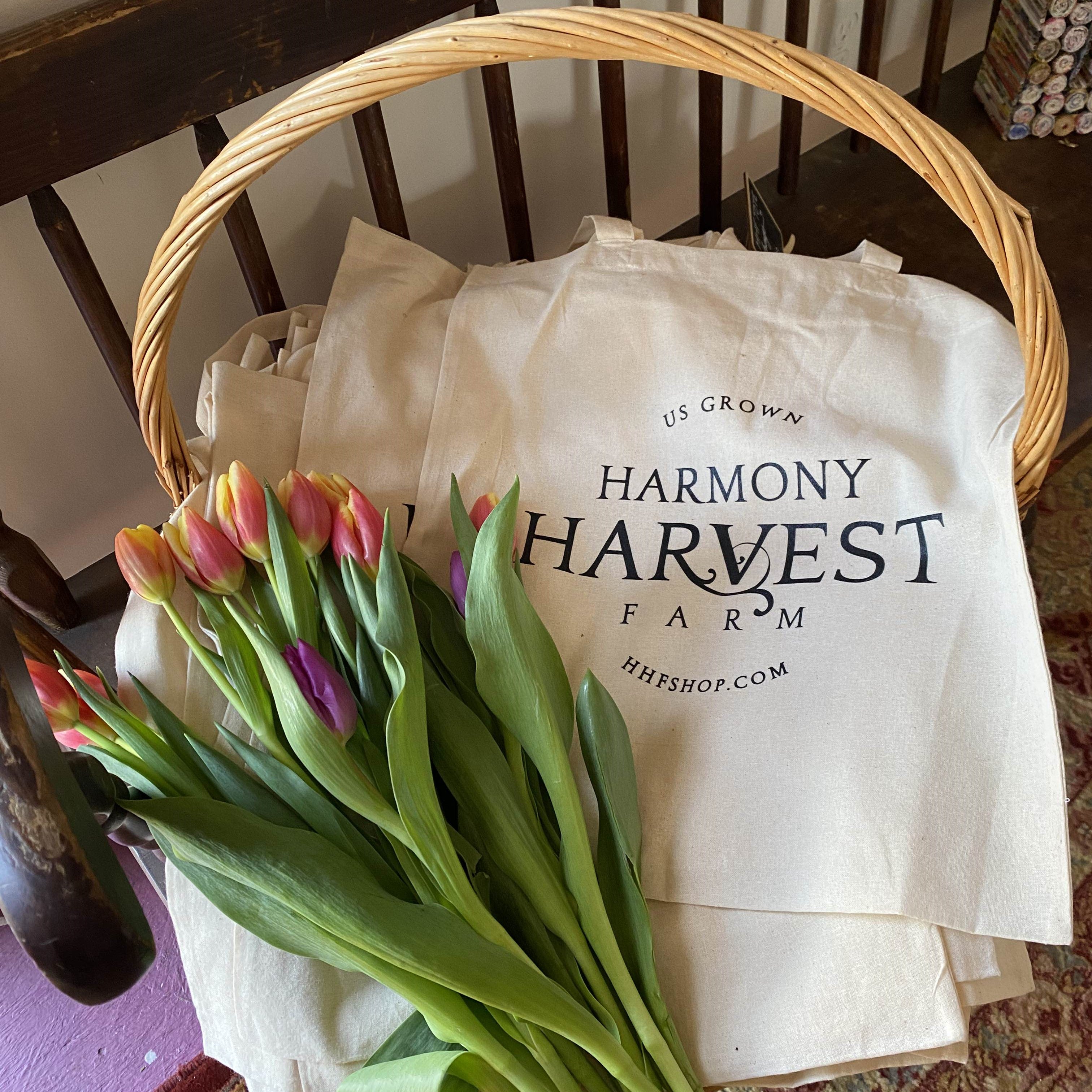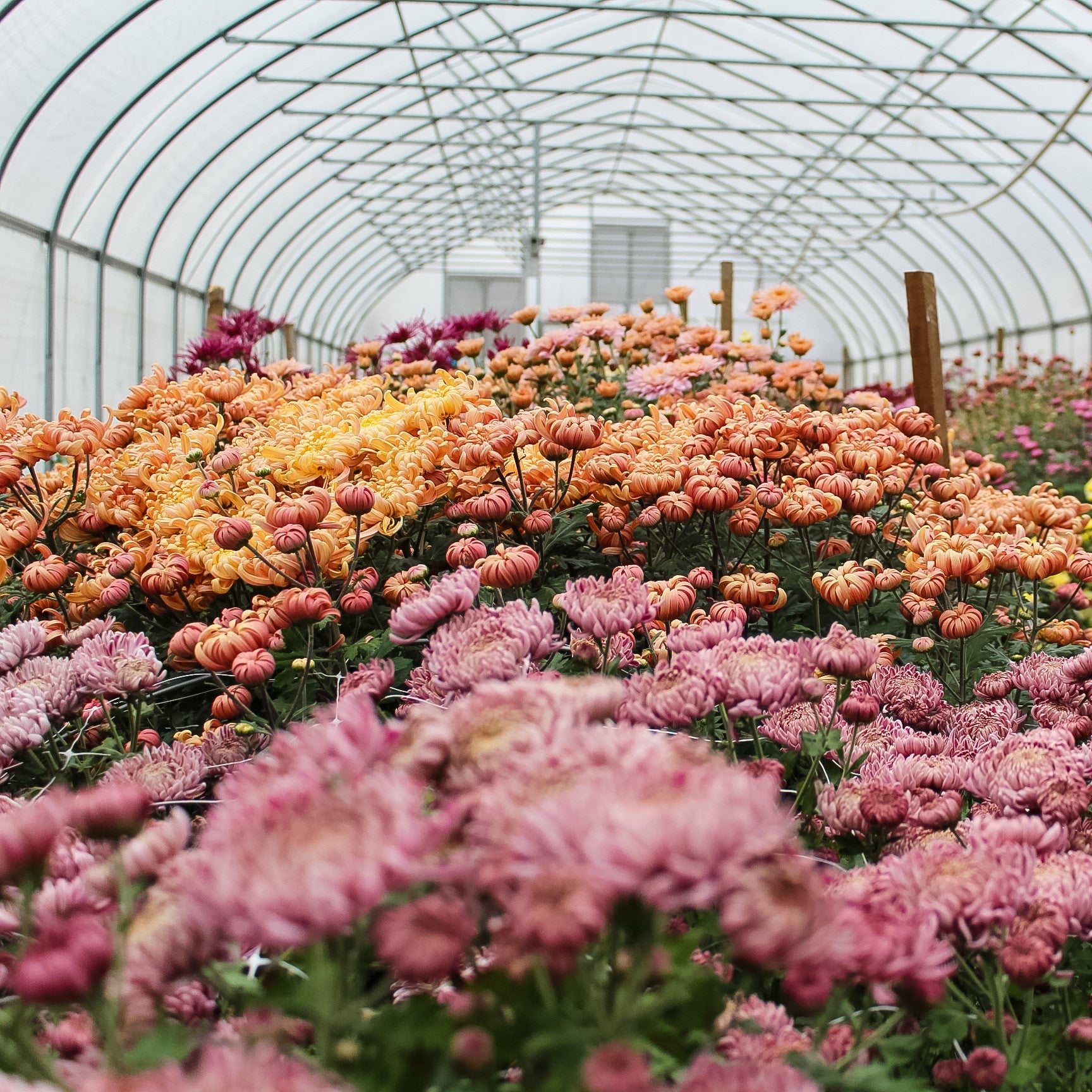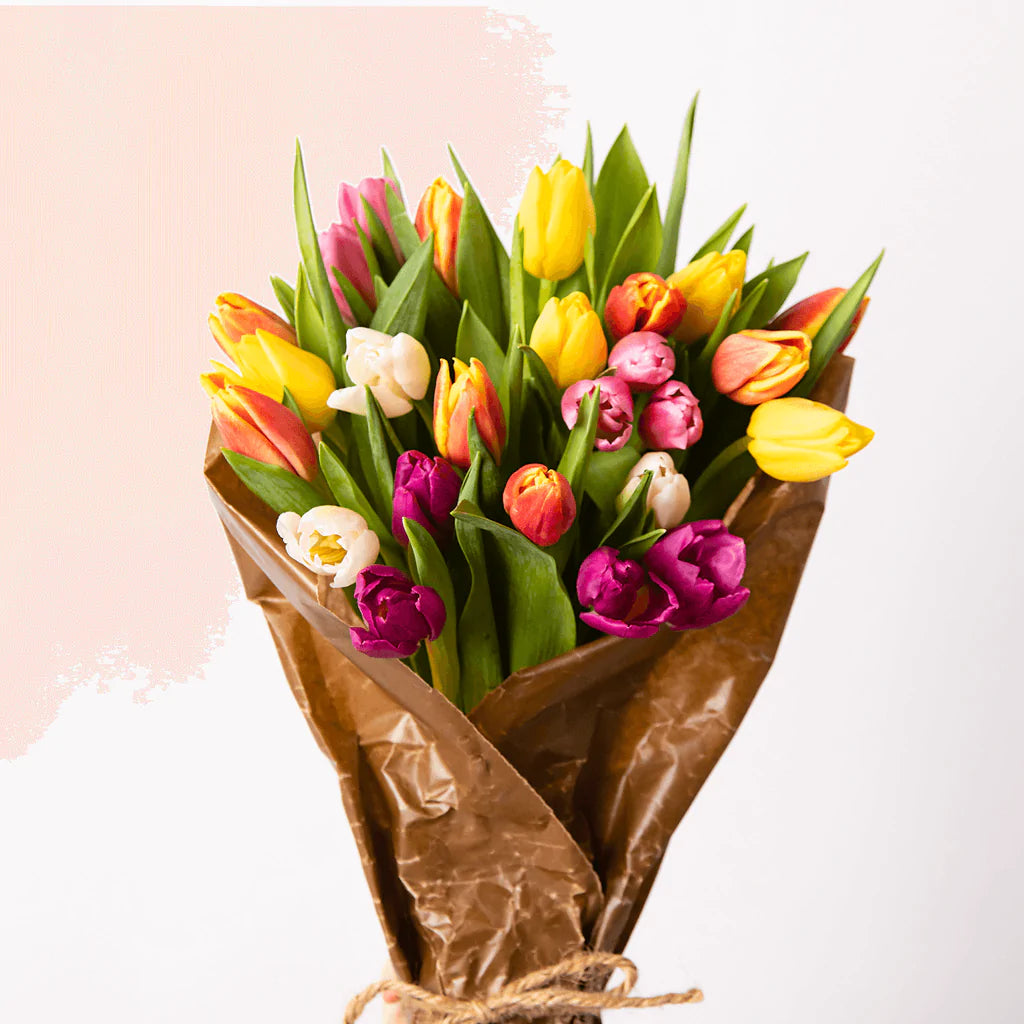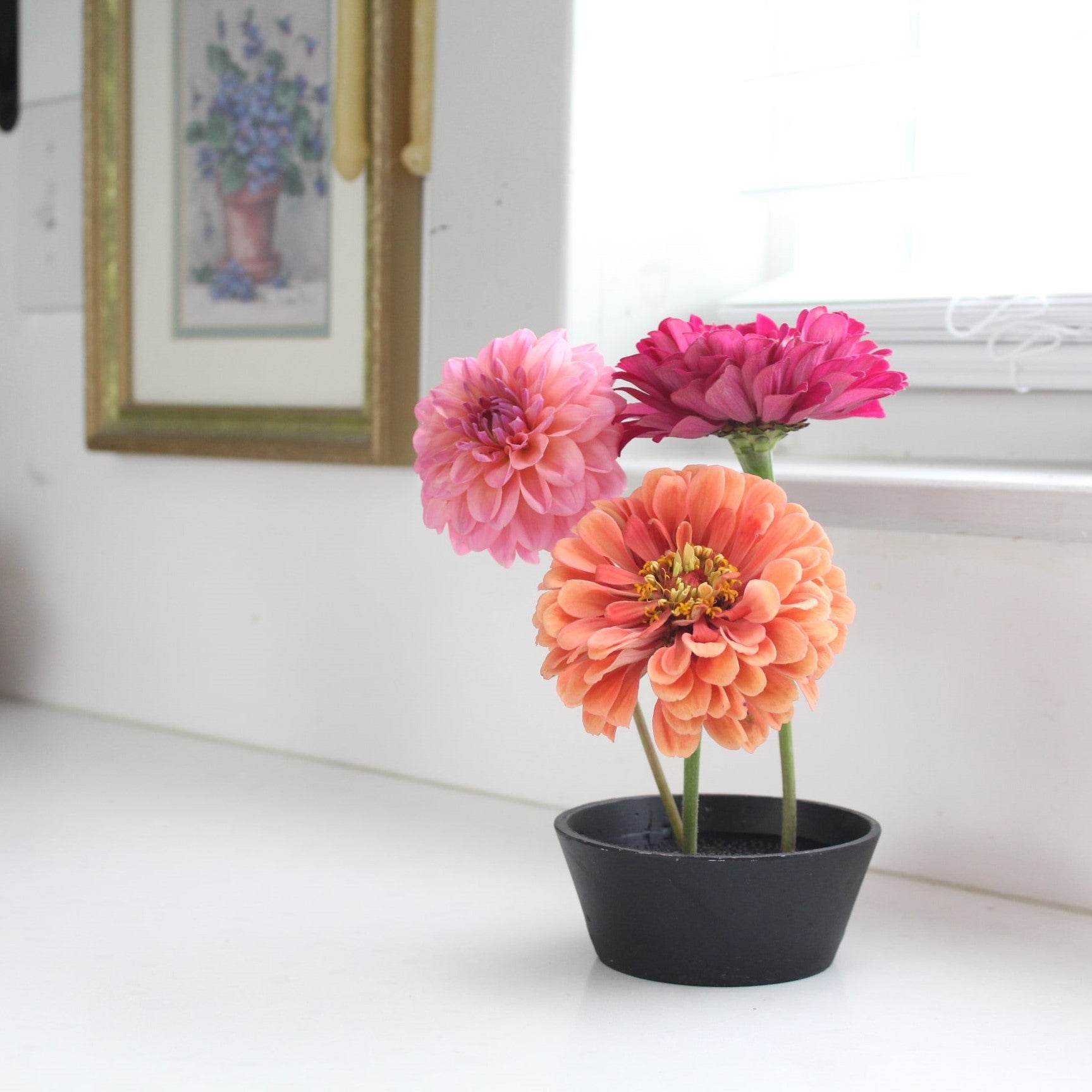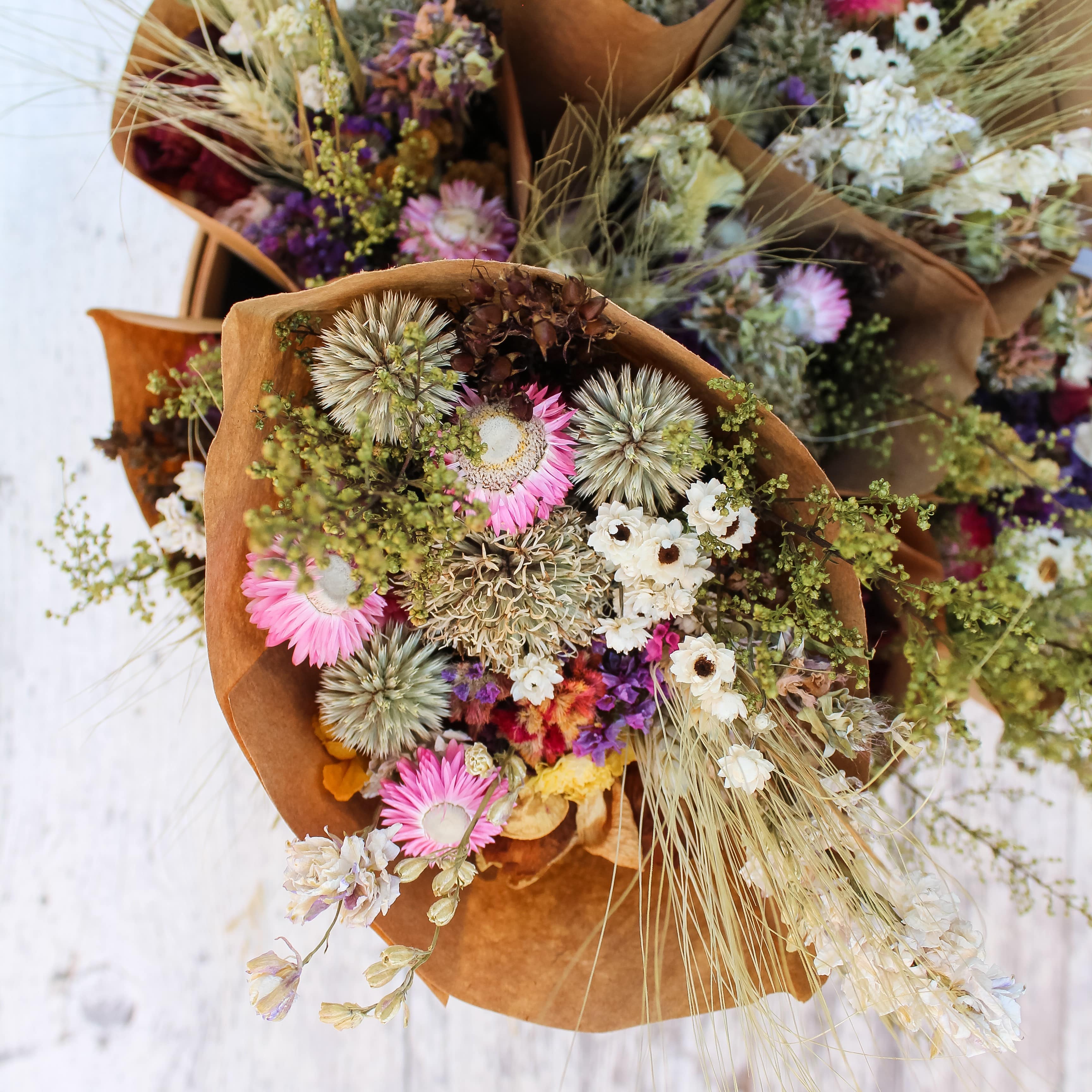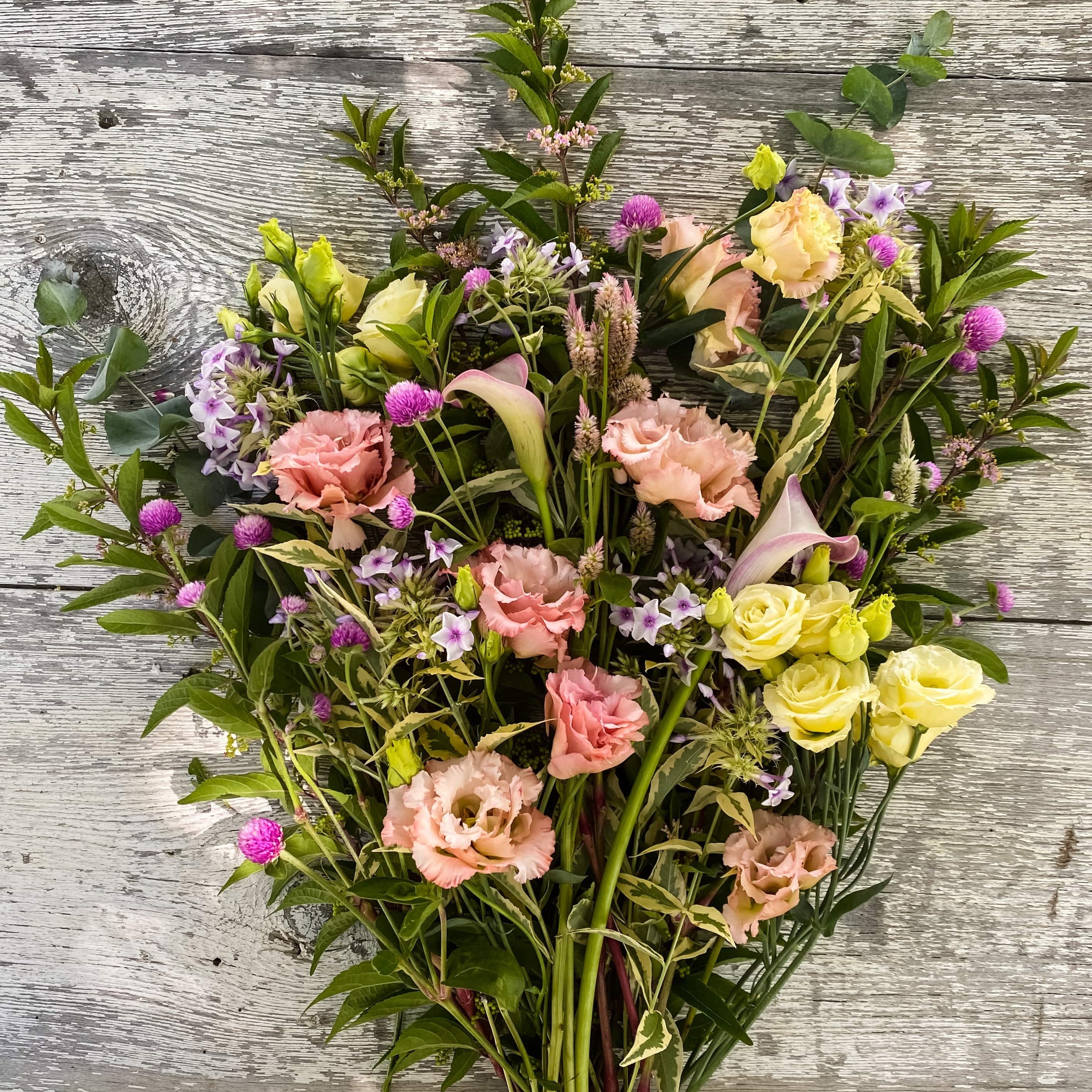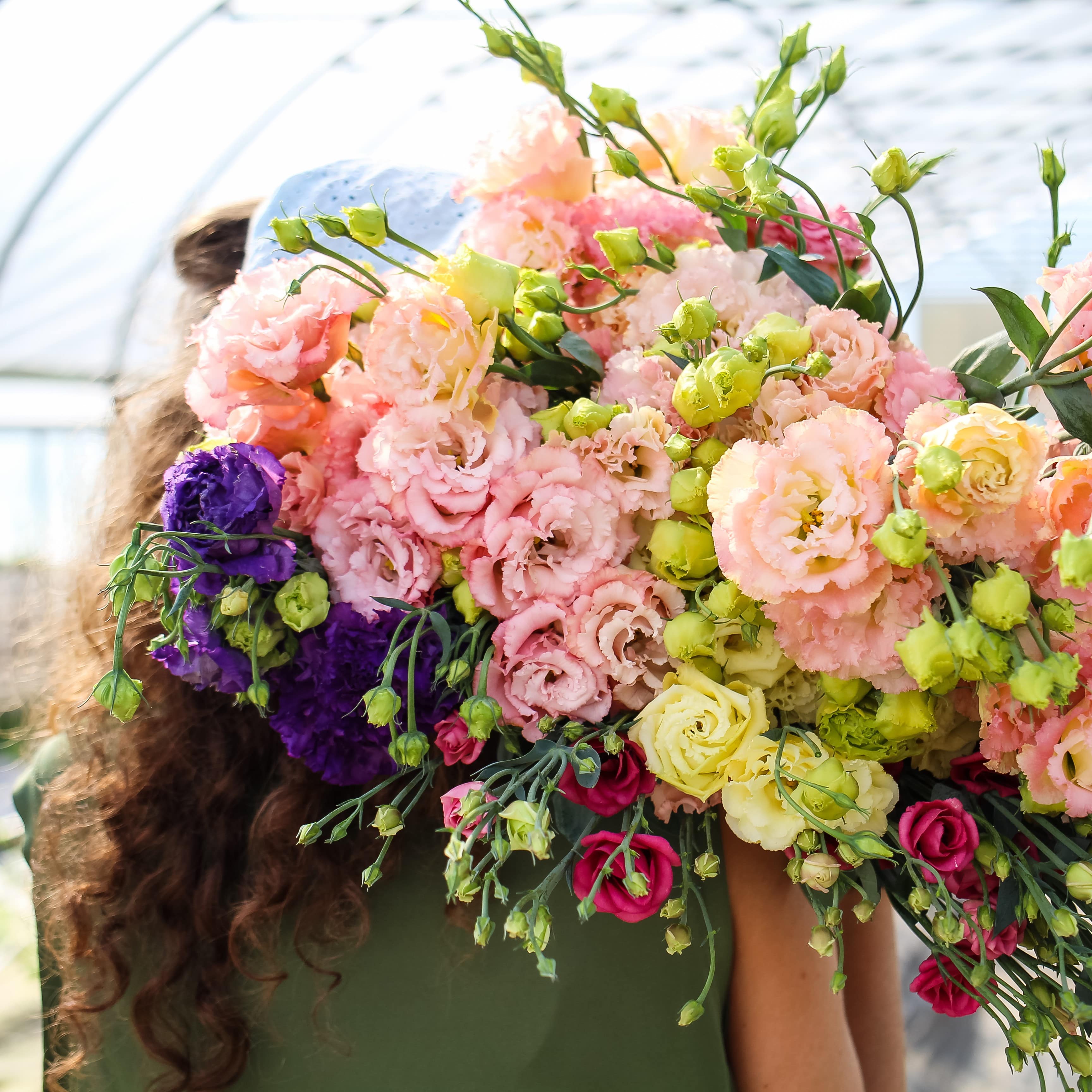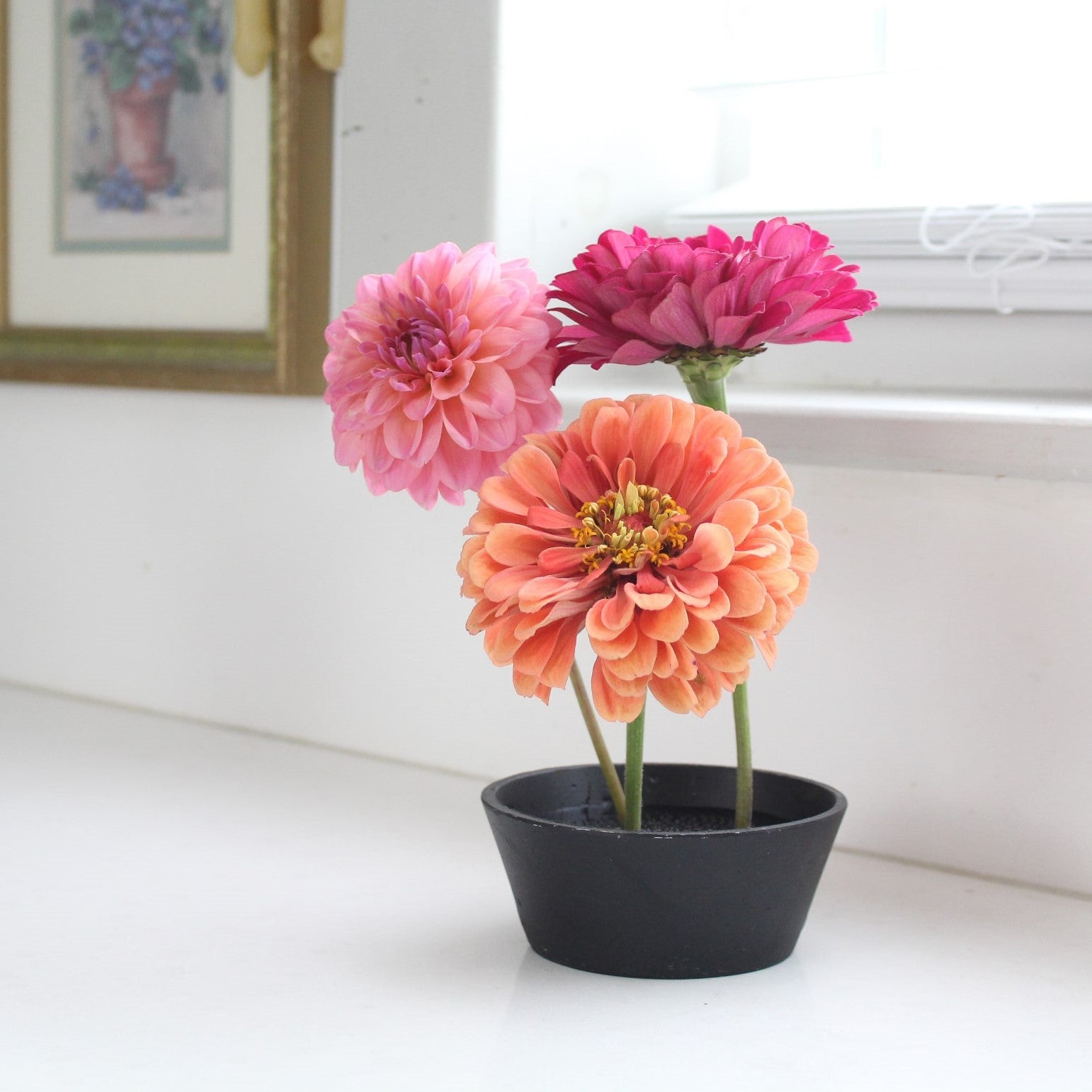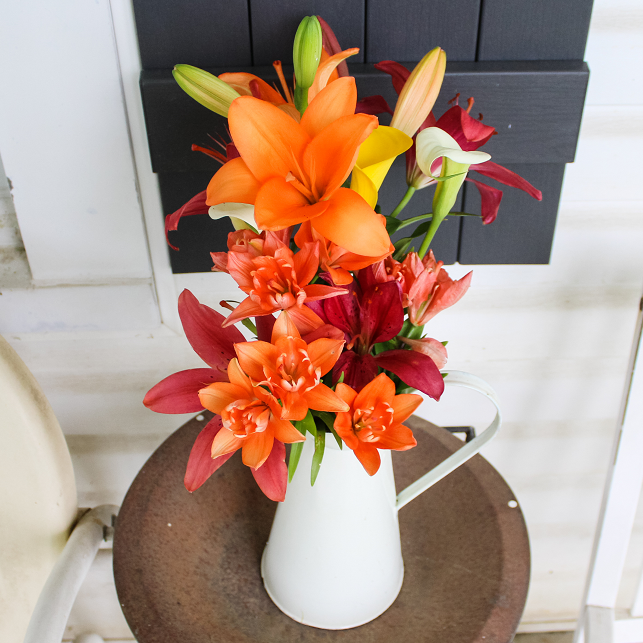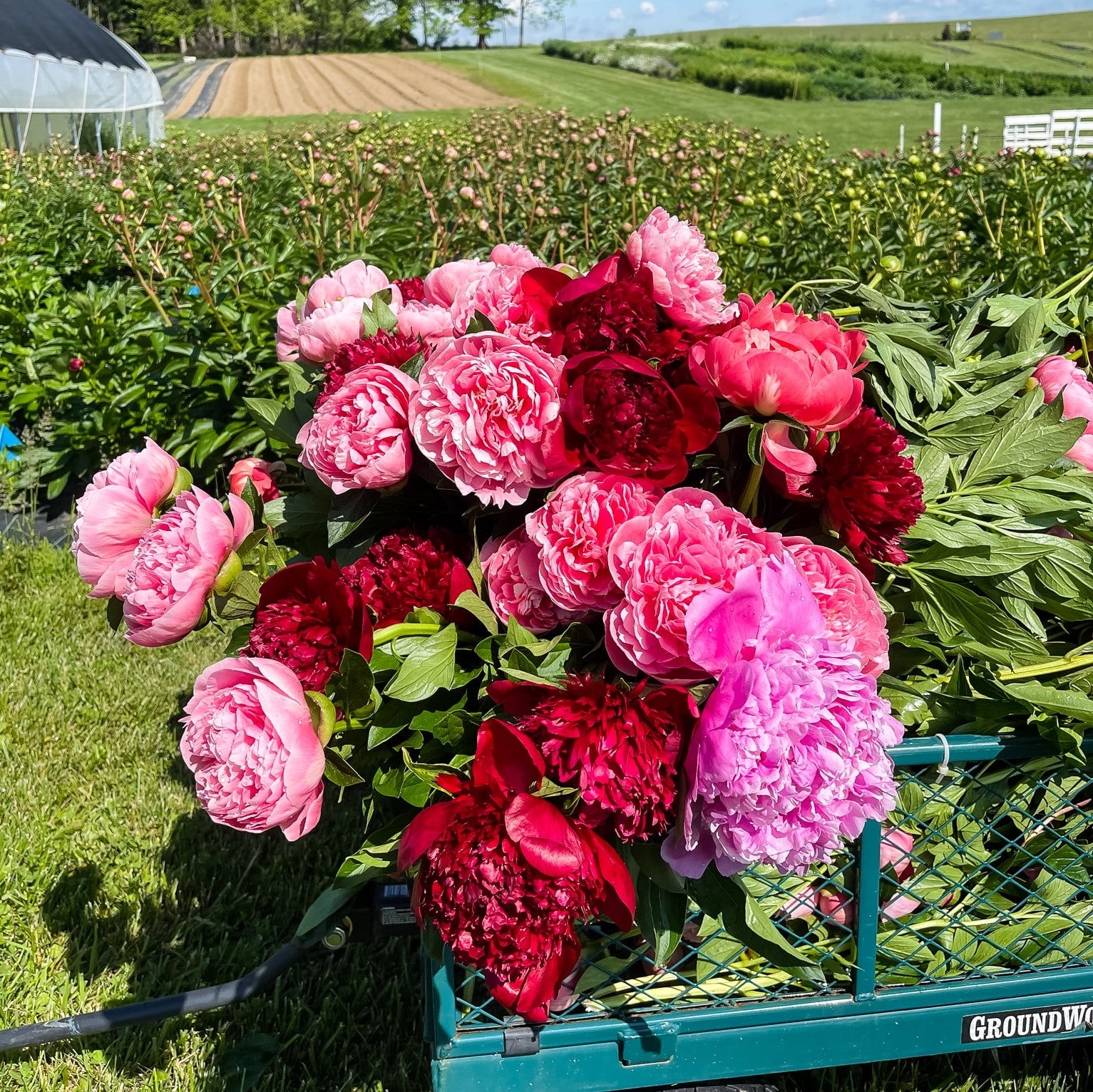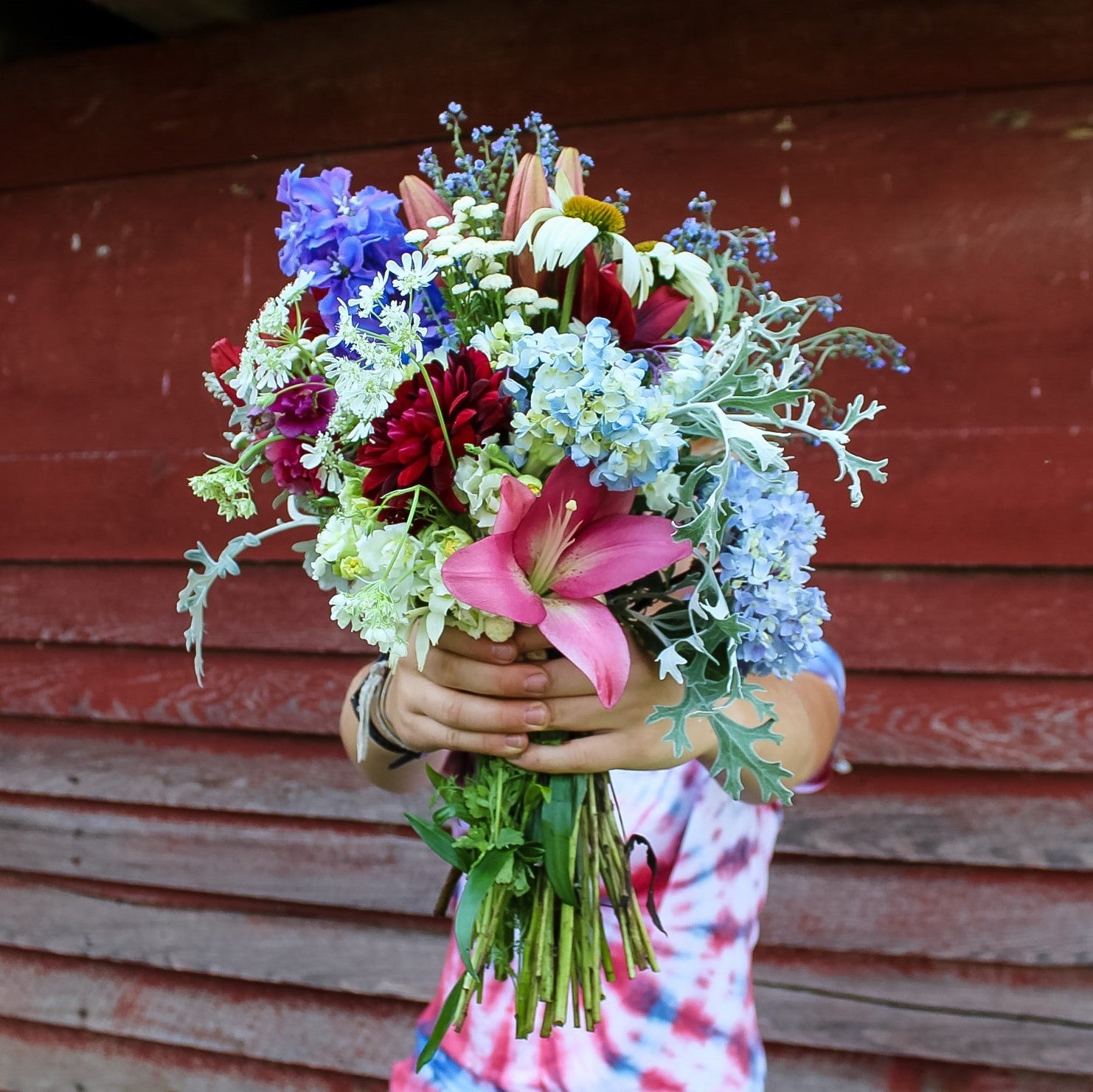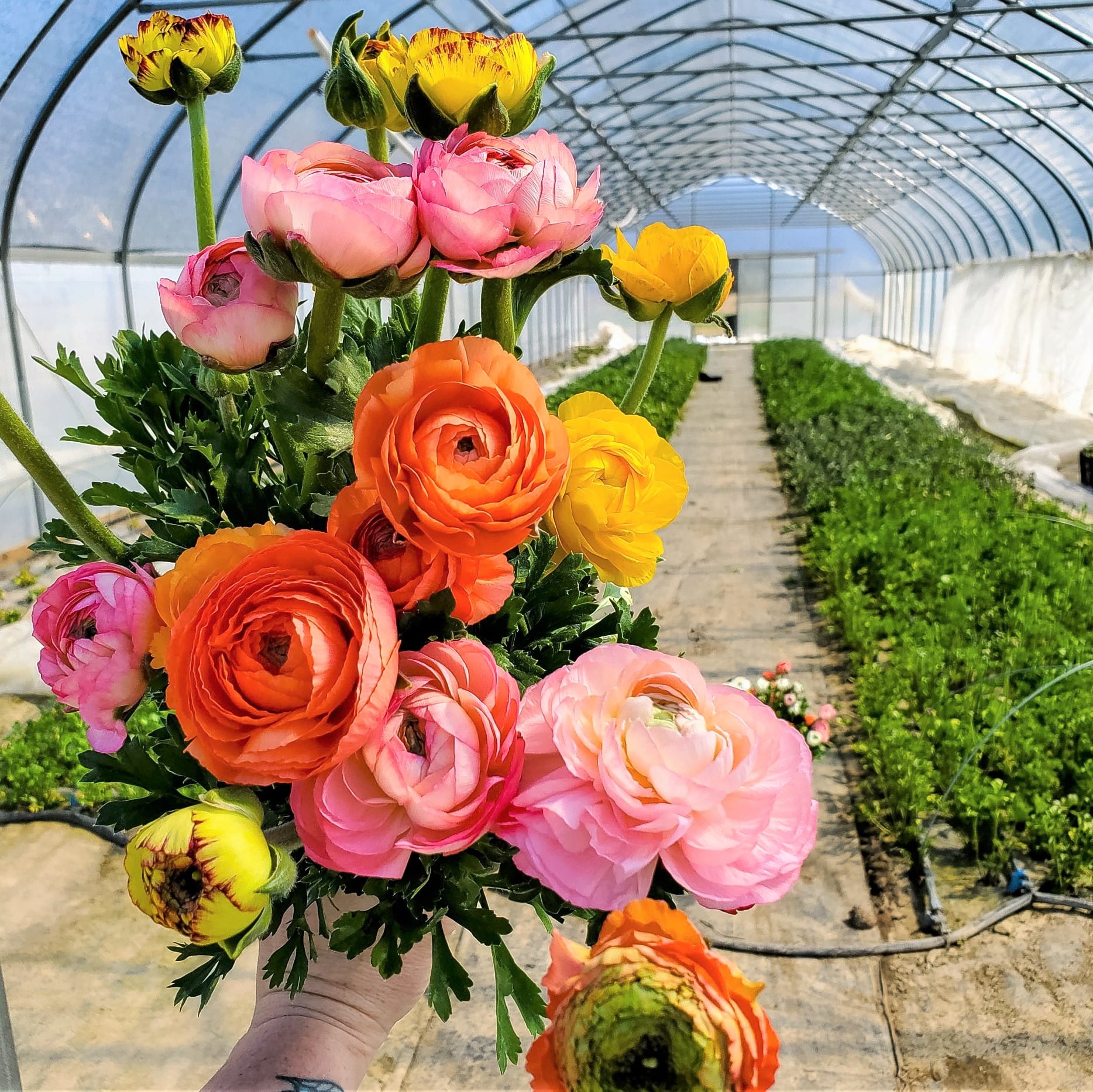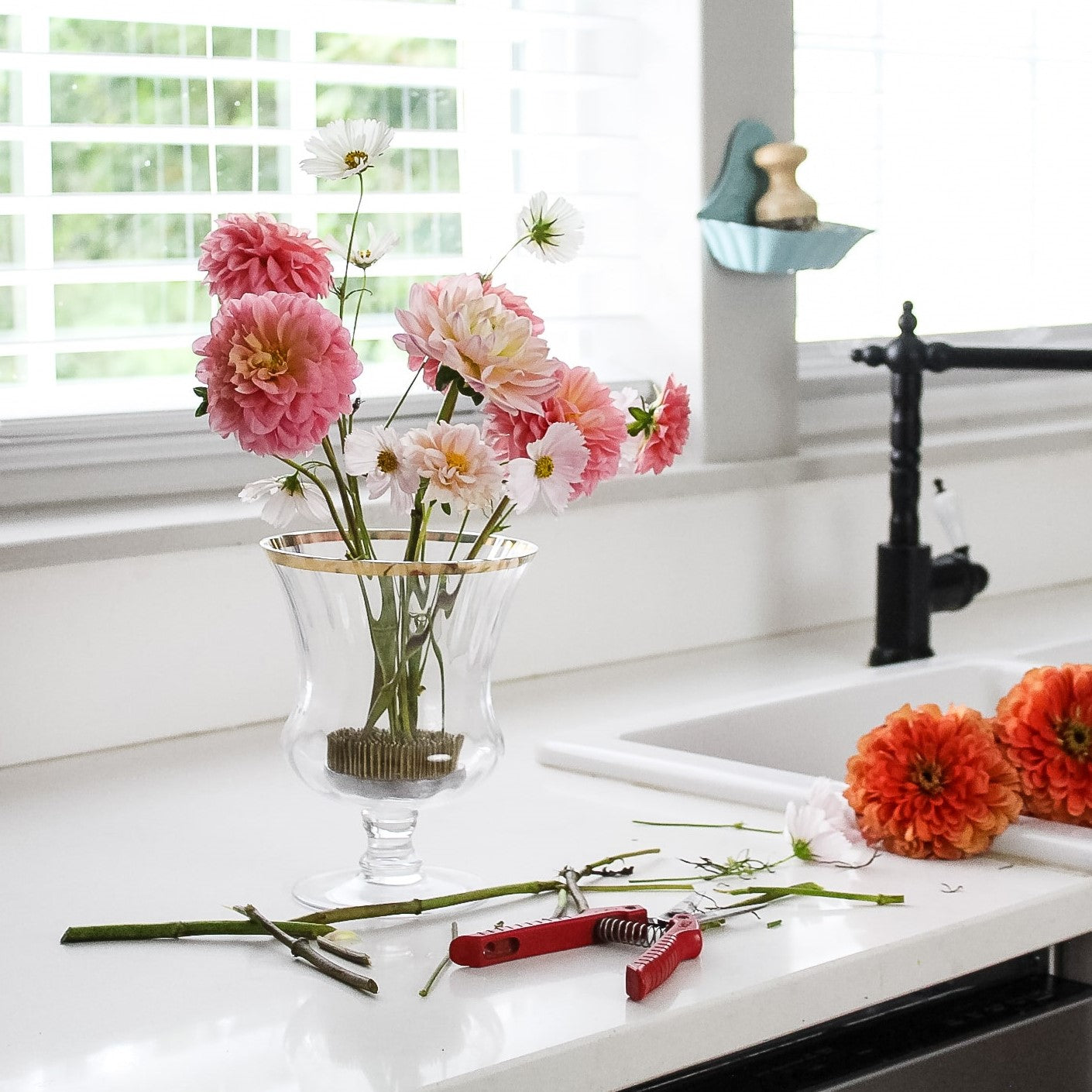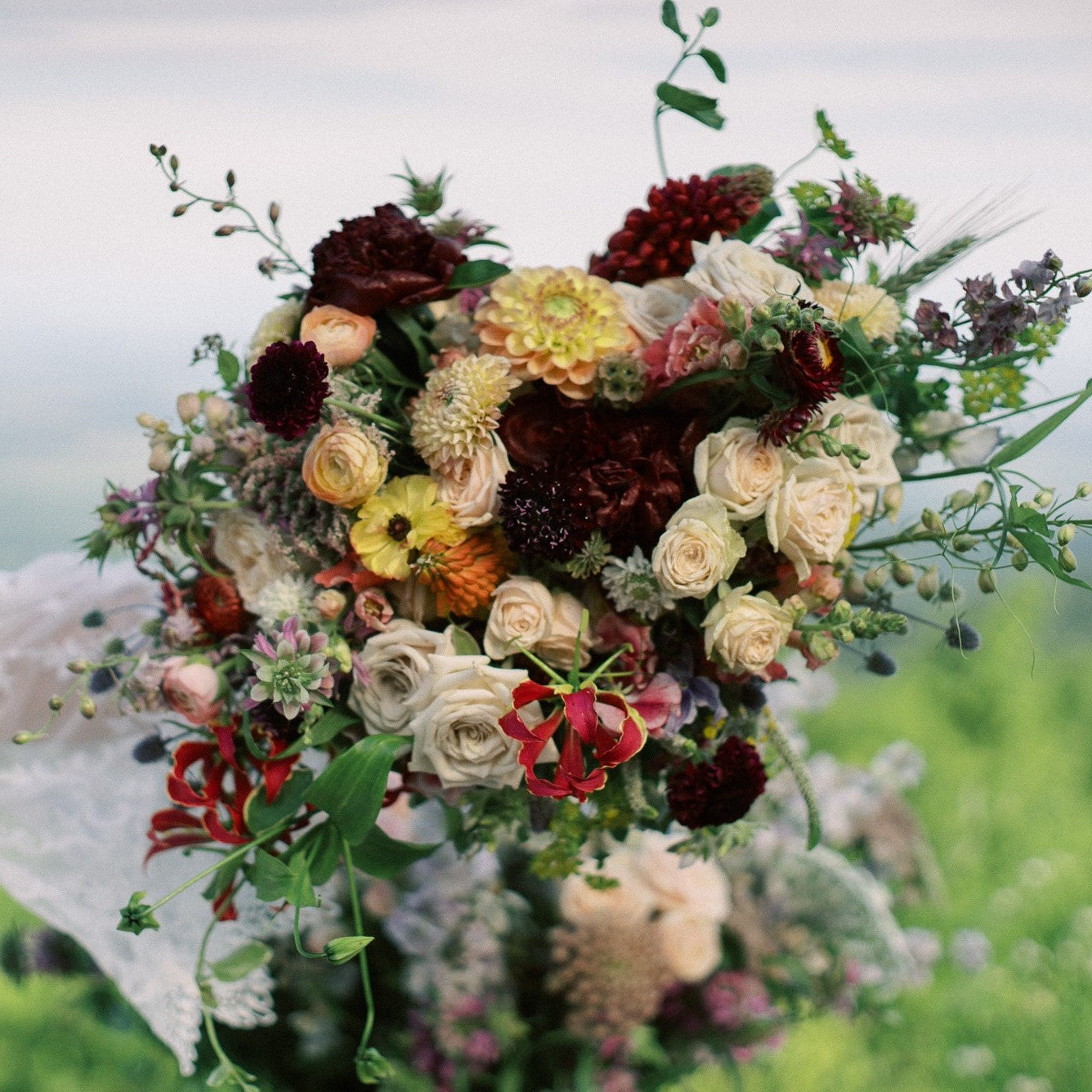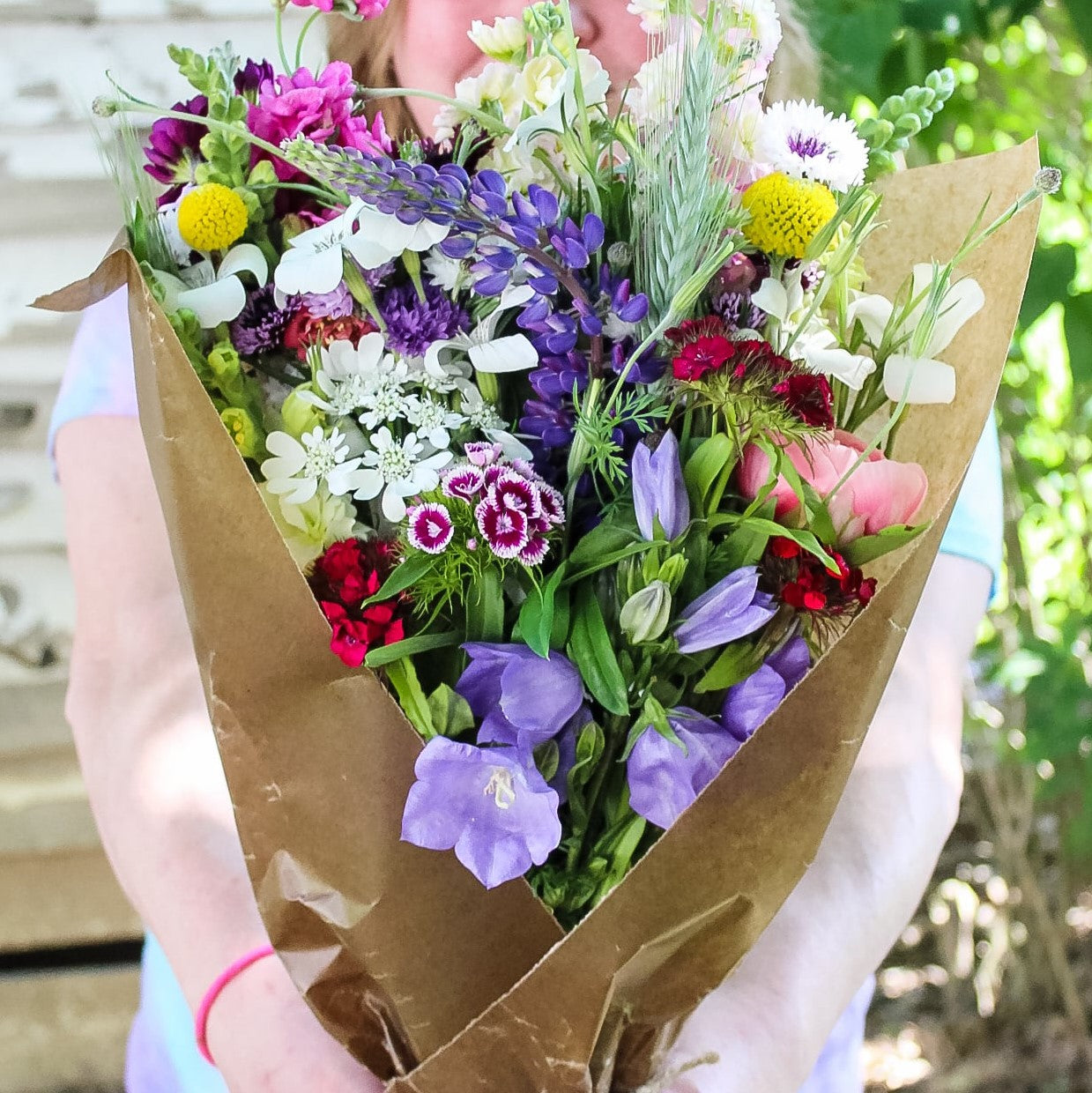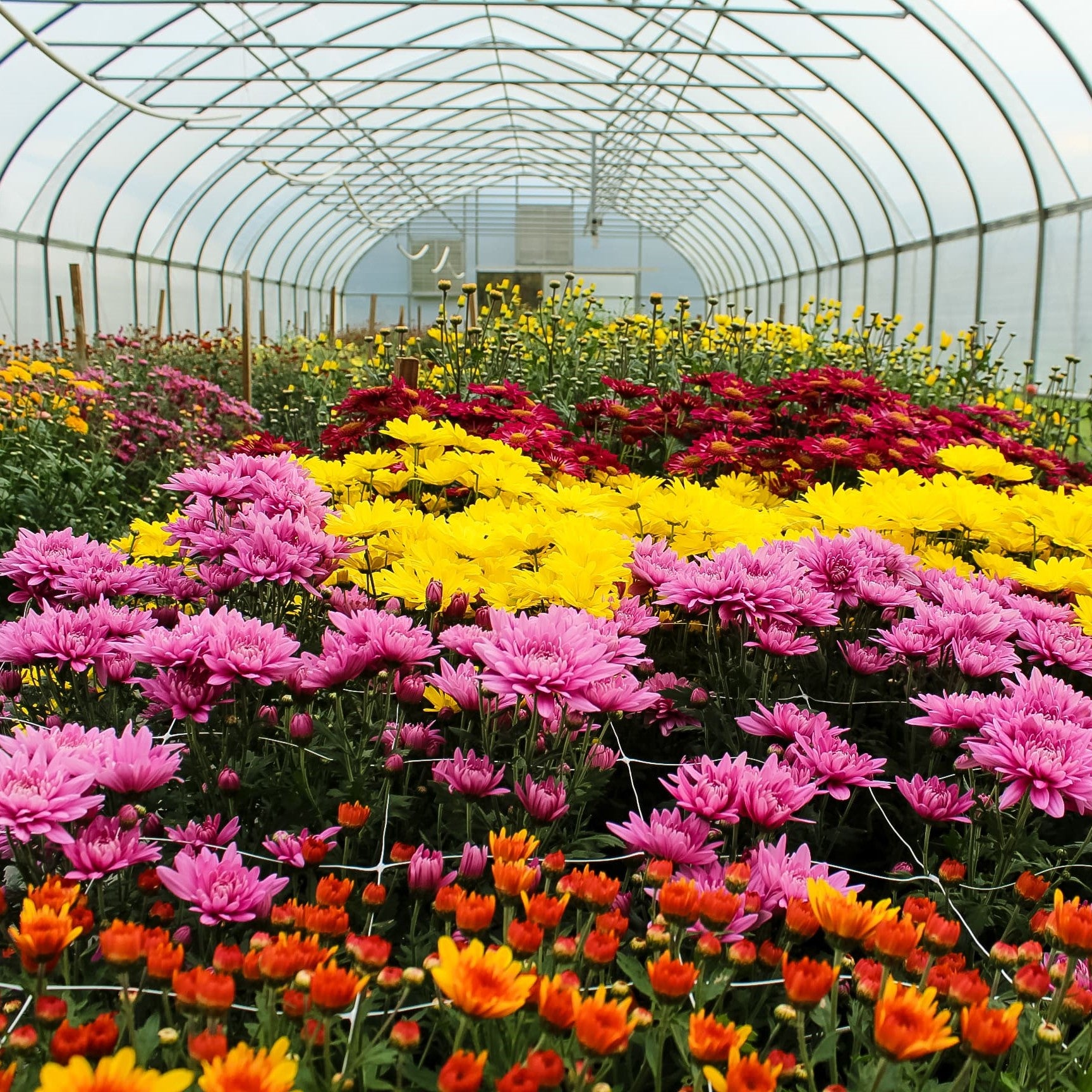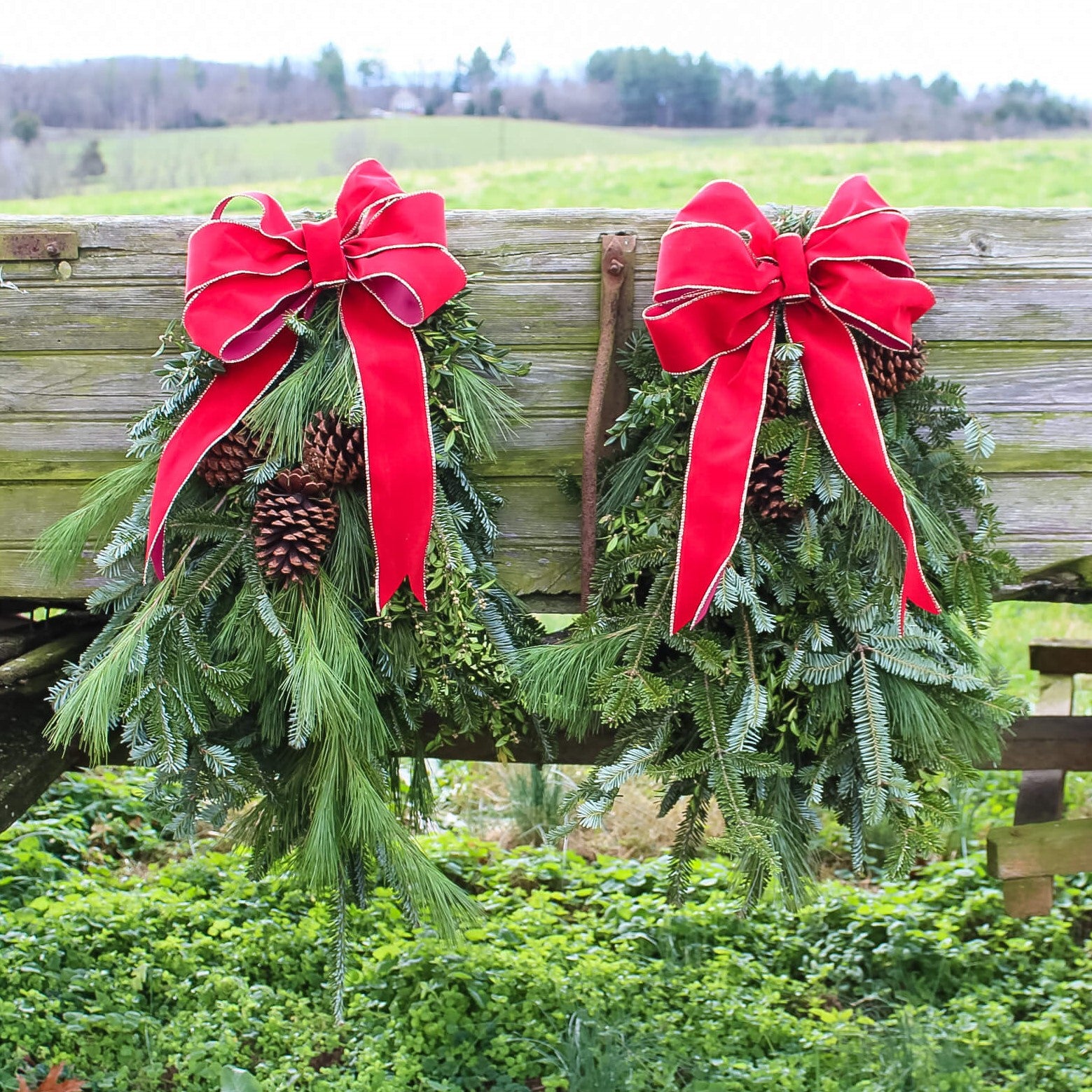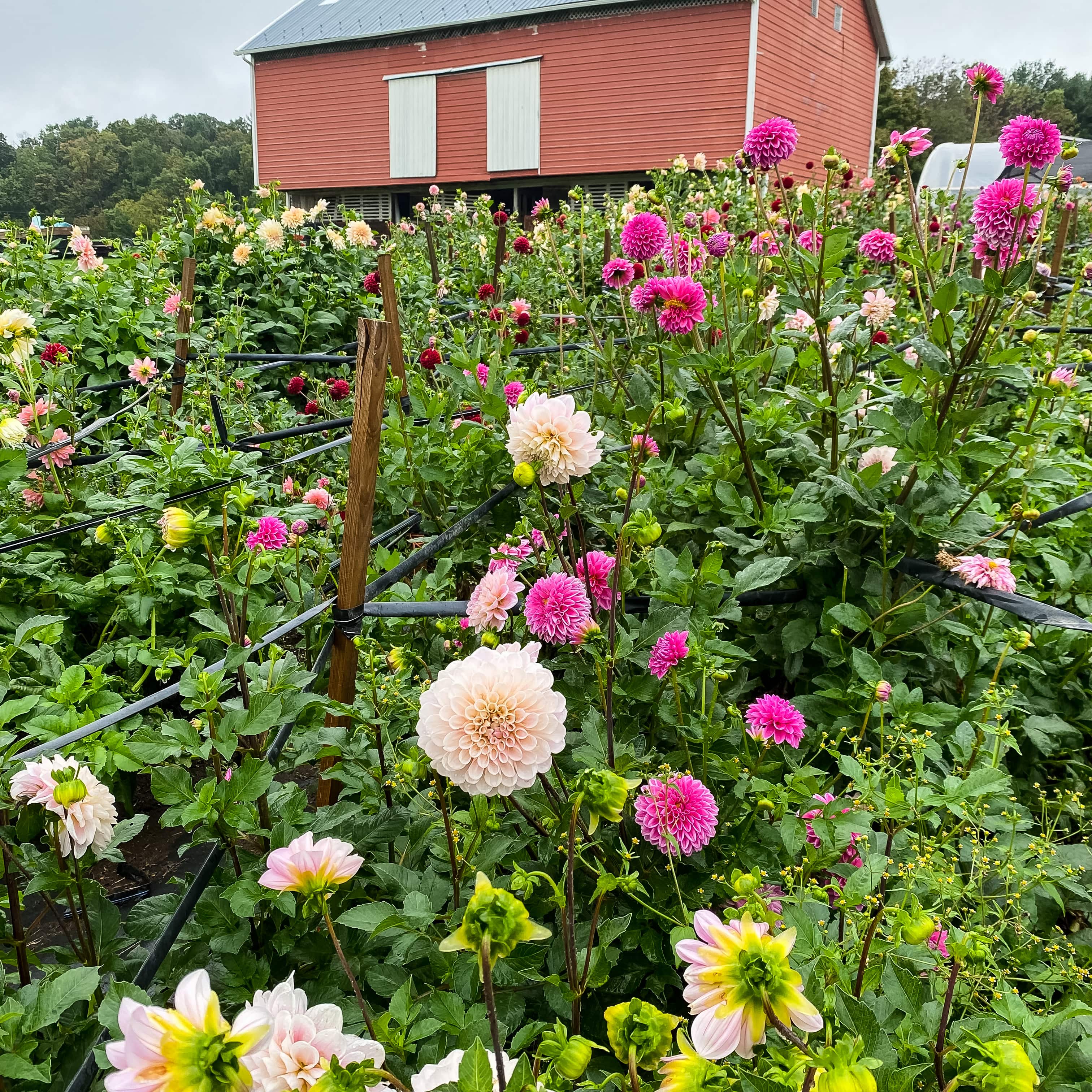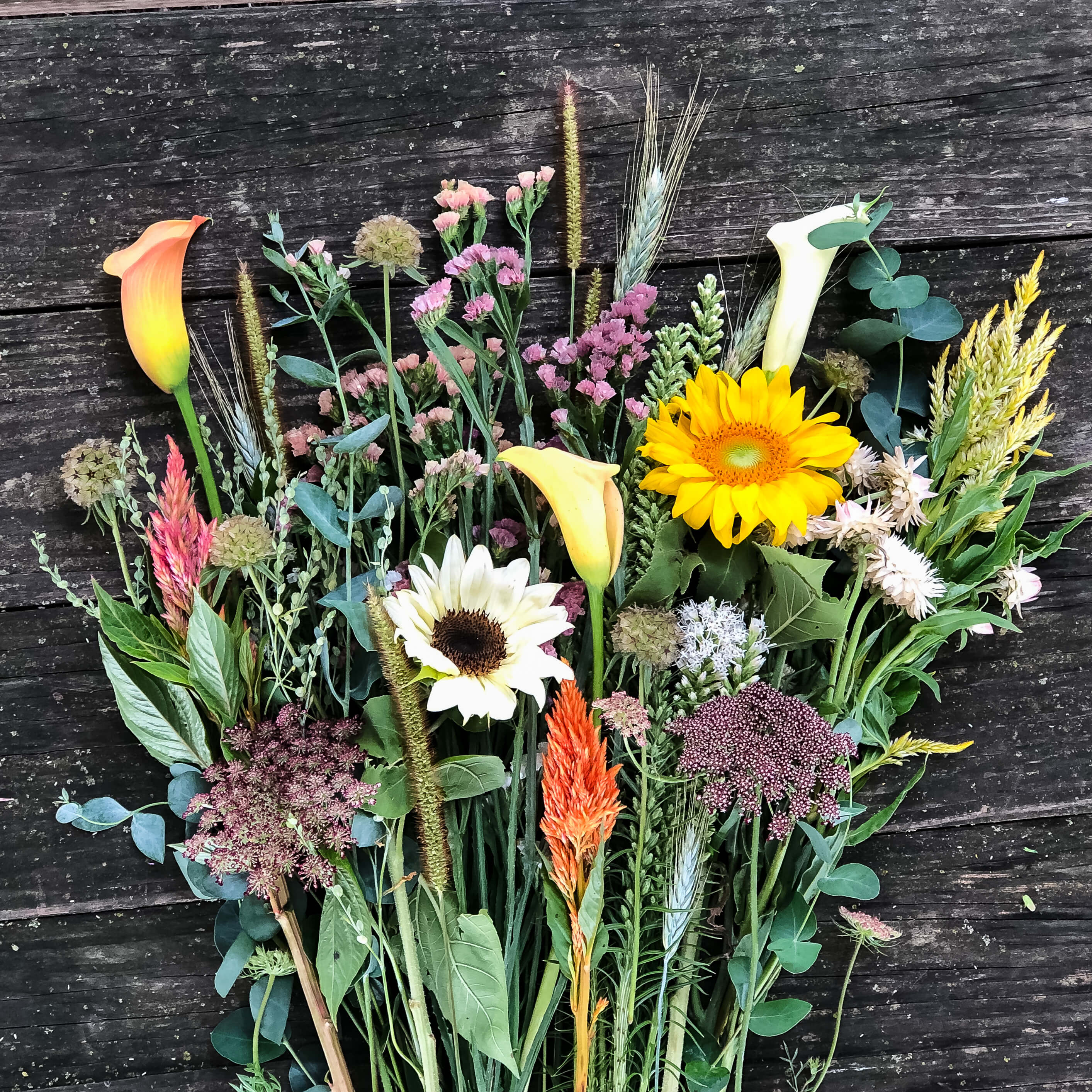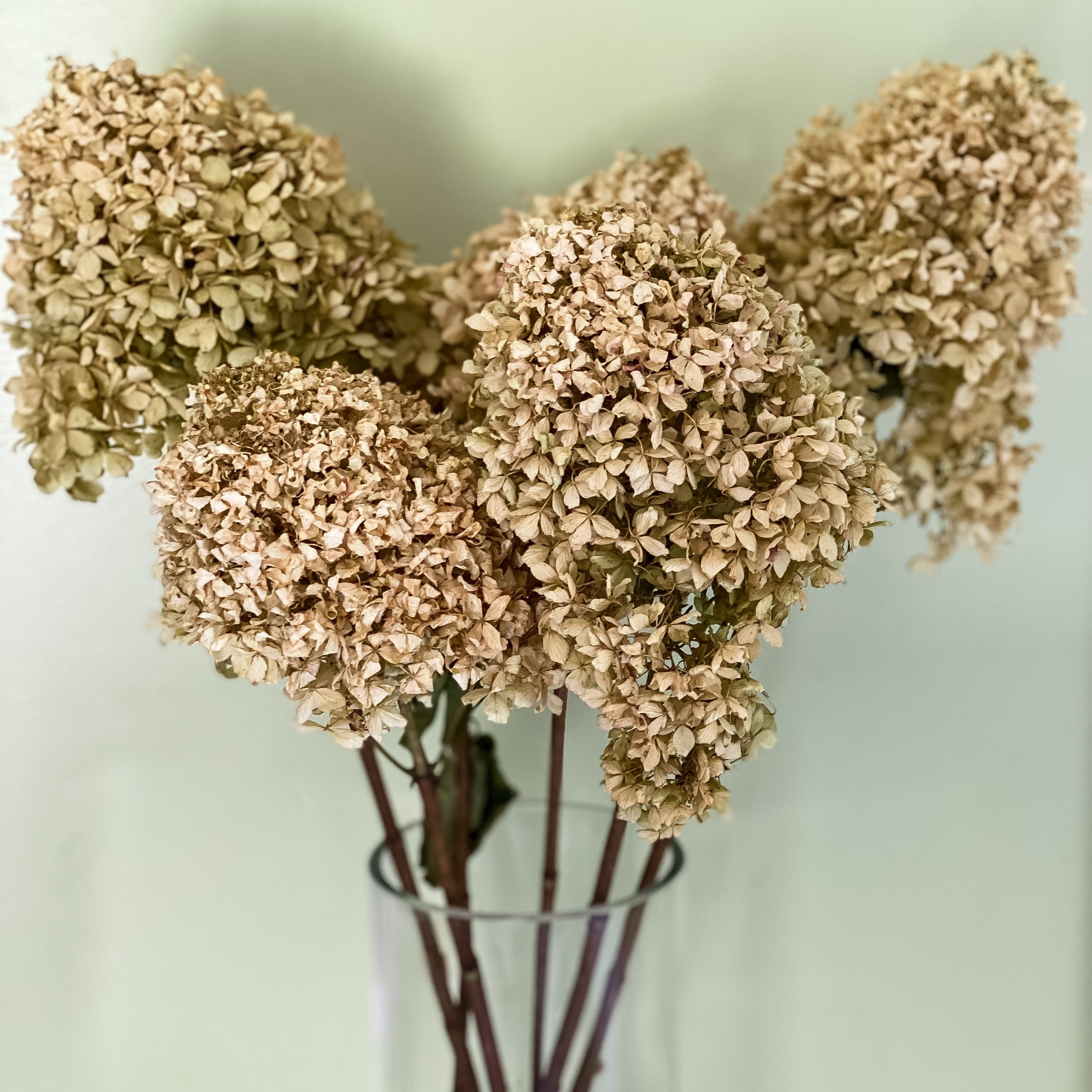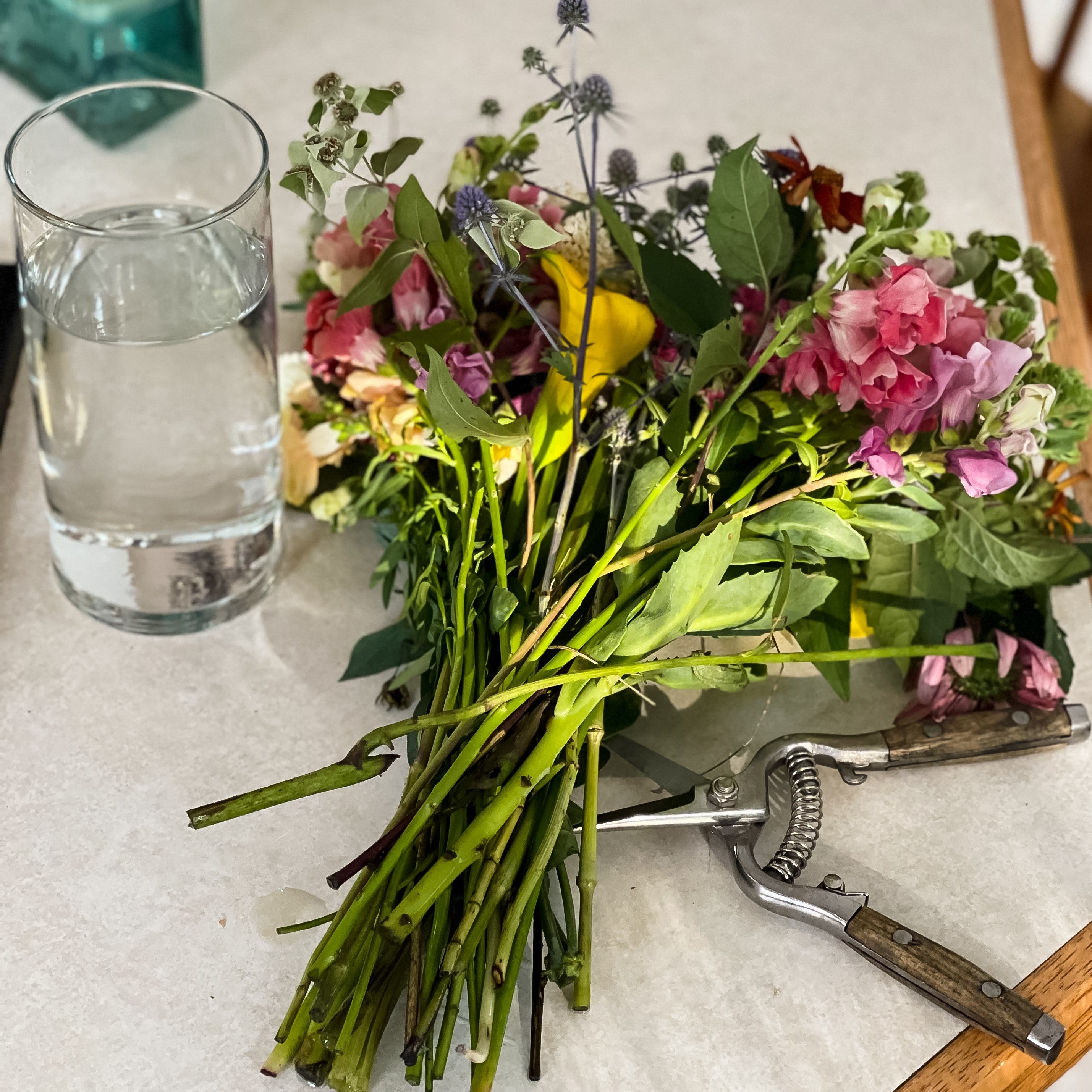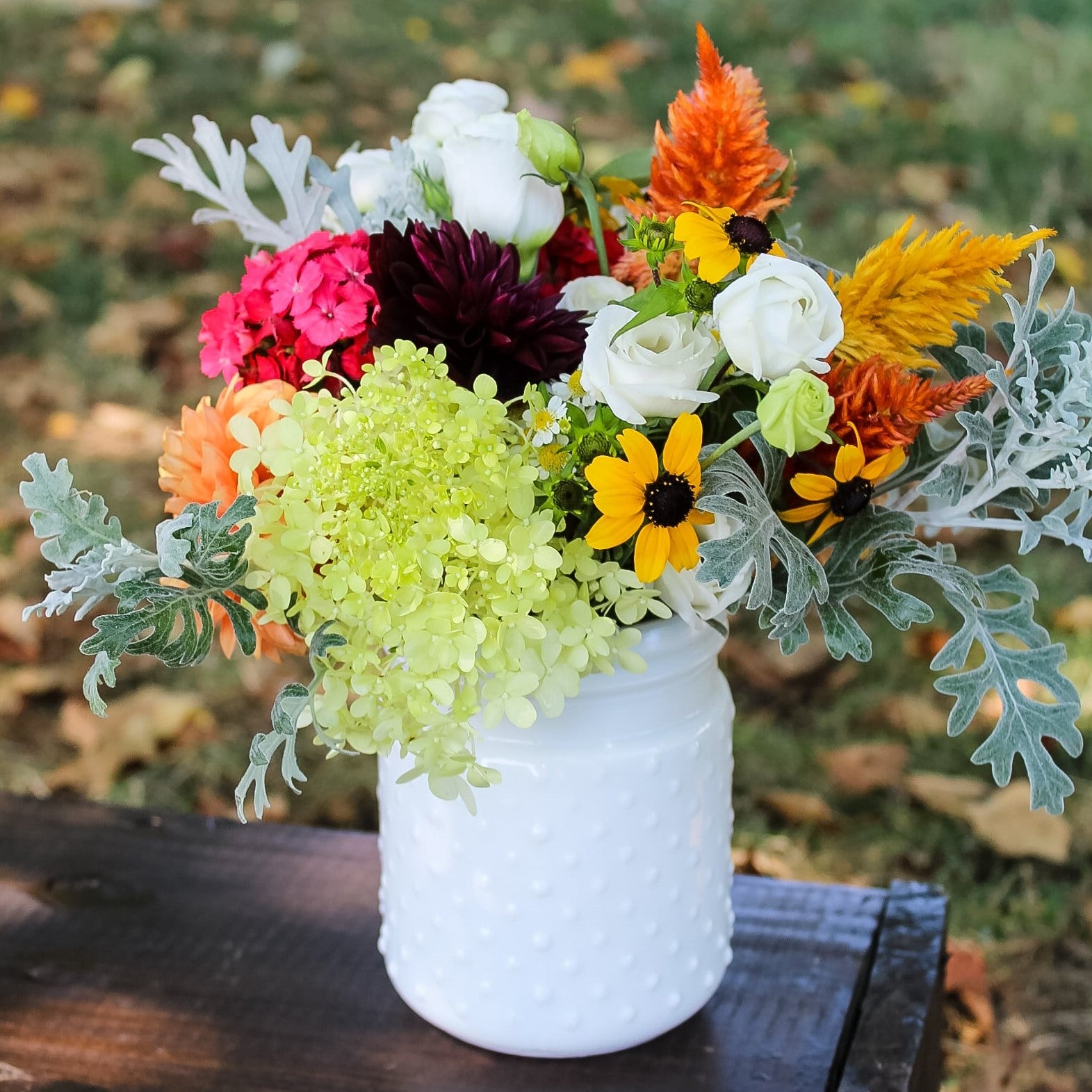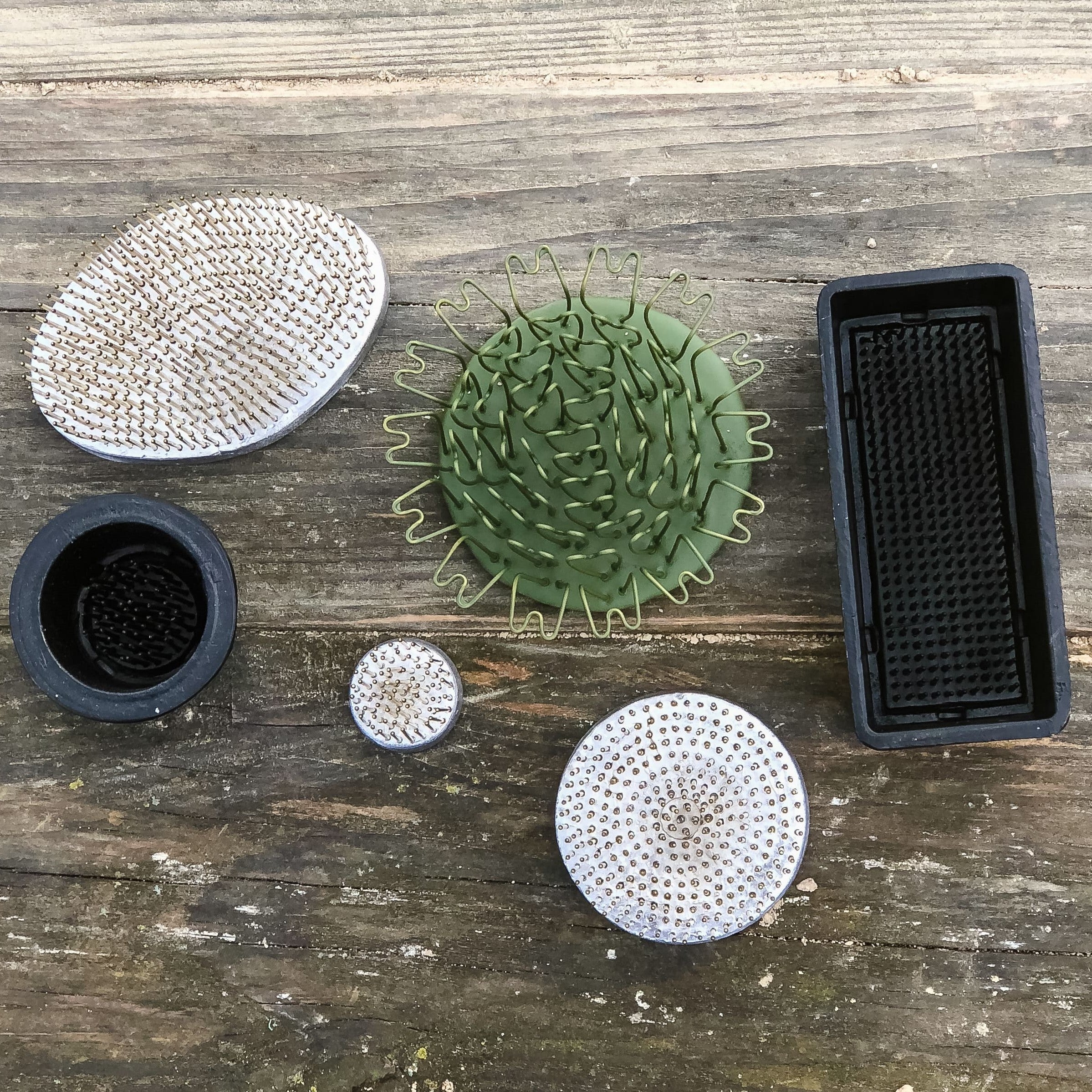Hi there, Mackenzie (HHF’s resident floral designer) here again to talk about - you guessed it - flowers! You know, if you ask almost anyone in the floral industry what their favorite flower is, it can be a loaded question - for me, at least, I have a long, long list that changes depending on the season. One unchanging variety on that ever-evolving list is what I’d like to chat about today: tulips! Unlike some of the more uncommon varieties that we grow here on the farm, pretty much everyone knows about tulips, but I think there are some little quirks that you might not be familiar with unless you’ve spent some quality time with them. And I, your ever-passionate flower advocate, would just LOVE to talk about them 🙂
 |
 |
If you didn’t already know, we don’t actually grow tulips here on the farm. This is for a few reasons, the main one being that the bulbs are relatively expensive, and when we have 200 other varieties to worry about, priorities need to be made. Lucky for us, our friends over at Bloomia have us covered! Sourcing our tulips from Bloomia not only makes sense for us, but we also love to collaborate with our flower-farming neighbors.

The biggest thing that I love about tulips, but some people might not know, is that tulips change dramatically throughout their life once they’re cut, even more so than other varieties. When our little tulip babies arrive at the farm, they’re much smaller, tighter, and more closed than you might expect - sometimes it’s hard to even tell what color they are! We give their stems a little trim, put them in some fresh water with yummy flower food, and into our cooler straight away. And that’s how they stay: small, tight, and closed in their chilly “hotel” until they’re ready to make a trip across my design table and off to their new home. This, ladies and gentlemen, is where the magic happens. Once they get into a warmer space and are exposed to a little bit of sunlight, they begin their sweet tulip dance. Over the course of about a day or two, those tight little flowers that may have seemed unimpressive at first, open up and bloom out into the wonderful symbols of spring that we know and love. Then, something even crazier happens - tulip stems actually continue to grow after they’re cut! We like to refer to it as a “dance”, and you have to experience it to understand. While straight stems are typically preferable for most flower varieties, tulips are known for their drooping, bending, delicate nature that could be confused as wilting to the untrained eye. So, next time you’re shopping for tulips (hopefully from us!), don’t be fooled by the greener, leafier bouquets and arrangements with smaller, closed blooms - those are the ones that put on the best show and last the longest! We like to offer these around Valentine’s Day, because not only are they a wonderful early spring flower, but they’re such perfect symbols of love - changing, growing, and lasting 💗
On top of all that, have you heard of specialty tulips? Unlike their wonderfully minimalist counterparts, these beauties have frilly double blooms. Jess likes to compare these to peonies, and I’d have to agree. While they’re not a perfect dupe for the giant peonies we look forward to later in spring, they certainly have a similar, impressive display. I’m not knocking the classic tulips (please see my love letter to them above), but these specialty tulips are on another level. If you haven’t seen them before, their frilly, layered petals and range of colors will redefine whatever you thought about tulips before.

In my opinion, tulips are tragically underrated, and as an official HHF Flower Advocate, I feel compelled to spread the word about these absolutely sublime flowers. If you’re with me on this, don’t forget to check out our tulip bouquets and arrangements, or learn more about their growing and care in our previous blog posts. I’ll see you here next time with more passionate rants about flowers!
XOXO, Jess
